
CLOUD COMPUTING
Agencies Need to
Incorporate Key
Practices to Ensure
Effective Performance
Report to Congressional Requesters
April 2016
GAO-16-325
United States Government Accountability Office
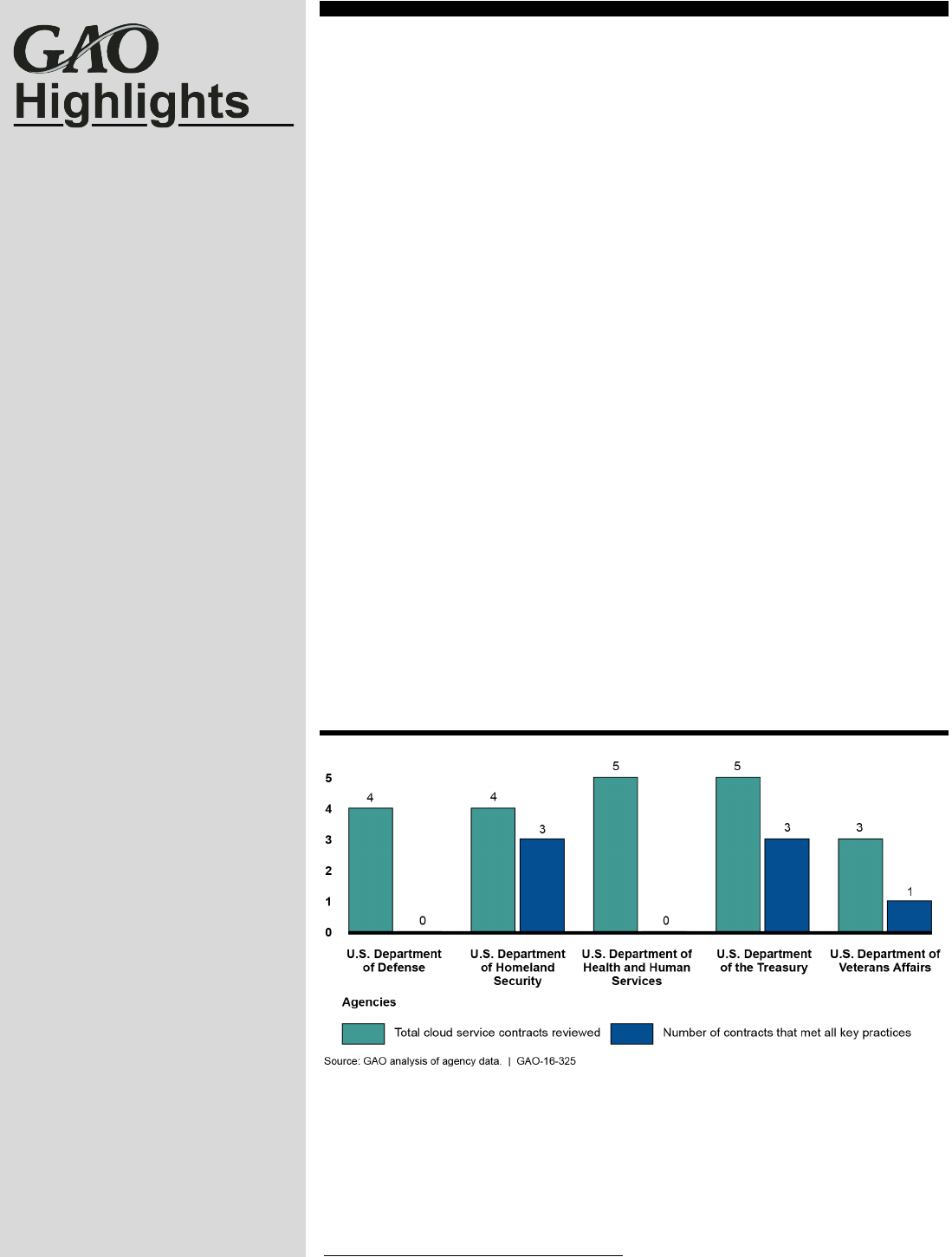
United States Government Accountability Office
Highlights of GAO-16-325, a report to
congressional requesters
April 2016
CLOUD COMPUTING
Agencies Need to Incorporate Key Practices to
Ensure Effective Performance
Why GAO Did This Study
Cloud computing is a means for
delivering computing services via IT
networks. When executed effectively,
cloud-based services can allow
agencies to pay for only the IT services
used, thus paying less for more
services. An important element of
acquiring cloud services is a service
level agreement that specifies, among
other things, what services a cloud
provider is to perform and at what
level.
GAO was asked to examine federal
agencies’ use of SLAs. GAO’s
objectives were to (1) identify key
practices in cloud computing SLAs and
(2) determine the extent to which
federal agencies have incorporated
such practices into their SLAs. GAO
analyzed research, studies, and
guidance developed by federal and
private entities to develop a list of key
practices to be included in SLAs. GAO
validated its list with the entities,
including OMB, and analyzed 21 cloud
service contracts and related
documentation of five agencies (with
the largest fiscal year 2015 IT budgets)
against the key practices to identify
any variances, their causes, and
impacts.
What GAO Recommends
GAO recommends that OMB include
all ten key practices in future guidance
to agencies and that Defense, Health
and Human Services, Homeland
Security, Treasury, and Veterans
Affairs implement SLA guidance and
incorporate applicable key practices
into their SLAs. In commenting on a
draft of this report, OMB and one
agency had no comment, the
remaining four agencies concurred
with GAO’s recommendations.
What GAO Found
Federal and private sector guidance highlights the importance of federal
agencies using a service level agreement (SLA) in a contract when acquiring
information technology (IT) services through a cloud computing services
provider. An SLA defines the level of service and performance expected from a
provider, how that performance will be measured, and what enforcement
mechanisms will be used to ensure the specified performance levels are
achieved. GAO identified ten key practices to be included in an SLA, such as
identifying the roles and responsibilities of major stakeholders, defining
performance objectives, and specifying security metrics. The key practices, if
properly implemented, can help agencies ensure services are performed
effectively, efficiently, and securely. Under the direction of the Office of
Management and Budget (OMB), guidance issued to agencies in February 2012
included seven of the ten key practices described in this report that could help
agencies ensure the effectiveness of their cloud services contracts.
GAO determined that the five agencies and the 21 cloud service contracts it
reviewed had included a majority of the ten key practices. Specifically, of the 21
cloud service contracts reviewed from the Departments of Defense, Health and
Human Services, Homeland Security, Treasury, and Veterans Affairs, 7 had
fulfilled all 10 of the key practices, as illustrated in the figure. The remaining 13
contracts had incorporated 5 or more of the 10 key practices and 1 had not
included any practices.
Figure 1: Number of Cloud Service Contracts That Met All 10 Key Practices
Agency officials gave several reasons for why they did not include all elements of
the key practices into their cloud service contracts, including that guidance
directing the use of such practices had not been created when the cloud services
were acquired. Unless agencies fully implement SLA key practices into their
SLAs, they may not be able to adequately measure the performance of the
services, and, therefore, may not be able to effectively hold the contractors
accountable when performance falls short.
View GAO-16-325. For more information,
contact
David A. Powner at (202) 512-
9286 or
.

Page i GAO-16-325 Cloud Computing
Letter 1
Background 3
Key Practices for Cloud Computing Service Level Agreements
Can Help Agencies Manage Services More Effectively 12
Selected Agencies Incorporated Most of the Key Practices, but
Differed in Addressing Them 15
Conclusions 19
Recommendations for Executive Action 20
Agency Comments and Our Evaluation 20
Appendix I Objectives, Scope, and Methodology 22
Appendix II Analysis of Agencies’ Cloud Service SLAs against Key Practices 25
Appendix III Comments from the Department of Defense 32
Appendix IV Comments from the Department of Homeland Security 34
Appendix V Comments from the Department of Health & Human Services 36
Appendix VI Comments from the Department of Veterans Affairs 38
Appendix VII GAO Contact and Staff Acknowledgments 40
Tables
Table 1: Key Practices for a Cloud Computing Service Level
Agreement 12
Table 2: Analysis of DOD’s Cloud Service SLAs against Key
Practices 25
Contents

Page ii GAO-16-325 Cloud Computing
Table 3: Analysis of DHS’s Cloud Service SLAs against Key
Practices 27
Table 4: Analysis of HHS’s Cloud Service SLAs against Key
Practices 28
Table 5: Analysis of Treasury’s Cloud Service SLAs against Key
Practices 30
Table 6: Analysis of VA’s Cloud Service SLAs against Key
Practices 31
Figures
Figure 1: Cloud Service Provider and Consumer Responsibilities
for the Three Service Models 5
Figure 2: Number of Cloud Service Contracts That Met All 10 Key
Practices at Selected Agencies 16
Figure 3: Number of 10 Key Practices Met on 21 Cloud Service
Contracts at Selected Agencies 17

Page iii GAO-16-325 Cloud Computing
Abbreviations
CIO chief information officer
DOD Department of Defense
DHS Department of Homeland Security
FAR Federal Acquisition Regulation
GSA General Services Administration
HHS Department of Health and Human Services
IT information technology
IRS Internal Revenue Service
NIST National Institute of Standards and Technology
OMB Office of Management and Budget
SLA service level agreement
Treasury Department of the Treasury
VA Department of Veterans Affairs
This is a work of the U.S. government and is not subject to copyright protection in the
United States. The published product may be reproduced and distributed in its entirety
without further permission from GAO. However, because this work may contain
copyrighted images or other material, permission from the copyright holder may be
necessary if you wish to reproduce this material separately.

Page 1 GAO-16-325 Cloud Computing
441 G St. N.W.
Washington, DC 20548
April 7, 2016
The Honorable Ron Johnson
Chairman
The Honorable Thomas R. Carper
Ranking Member
Committee on Homeland Security and Governmental Affairs
United States Senate
The Honorable Jason Chaffetz
Chairman
Committee on Oversight and Government Reform
House of Representatives
Cloud computing is a process for acquiring and delivering computing
services via internal or external information technology (IT) networks.
According to the National Institute of Standards and Technology (NIST),
cloud computing is “a means for enabling on-demand access to shared
and scalable pools of computing resources with the goal of minimizing
management effort or service provider interaction.” More specifically,
purchasing IT services through a provider enables agencies to avoid
paying for all the assets (e.g., hardware, software, networks) that would
typically be needed to provide such services. This approach offers federal
agencies a means to buy the services faster and possibly cheaper than
through the traditional methods they have used, such as keeping it all in-
house. To take advantage of these potential benefits, agencies have
reported that they plan to spend more than $2 billion on cloud computing
services in fiscal year 2016.
1
An important part of acquiring IT cloud computing services is
incorporating a service level agreement (SLA) into the contract. An SLA
defines levels of service and performance that the agency expects the
contractor to meet and the agency uses the information to measure the
effectiveness of its cloud services. To encourage the use of SLAs, the
Office of Management and Budget (OMB) directed subject matter experts
to issue guidance that highlighted SLAs as a key factor to be addressed
1
https://www.itdashboard.gov.
Letter

Page 2 GAO-16-325 Cloud Computing
in developing cloud computing contracts.
2
You asked us to examine
federal agencies’ use of SLAs. Specifically, our objectives were to (1)
identify key practices used in cloud computing service level agreements
to ensure service is performed at specified levels and (2) determine the
extent to which federal agencies have incorporated such practices into
their cloud computing service level agreements.
To identify key practices, we analyzed SLA research, studies, and
guidance developed and used by federal agencies and private entities
and performed a comparative analysis of the practices to identify the most
effective ones. Specifically, we analyzed information from publications
and related documentation issued by the following ten public and private
organizations to determine key SLA practices:
• Federal Chief Information Officers Council
• Chief Acquisitions Officers Council
• National Institute of Standards and Technology
• European Commission Directorate General for Communications
Networks, Content and Technology
• OMB
• Gartner
• MITRE Corporation
• Cloud Standards Customer Council
• International Organization for Standardization
• International Electrotechnical Commission
We then validated our analysis through interviews with experts from these
organizations. We also had officials from OMB review and validate that
the practices we identified are those the office expects federal agencies
to follow.
To determine the extent to which federal agencies have incorporated key
practices into their cloud computing contracts, we selected five agencies
to review based, in part, on the size of their largest fiscal year 2015 IT
budgets and planned spending on cloud computing services. The
agencies selected were the Departments of
2
Chief Information Officer’s Council and Chief Acquisition Officers Council, Creating
Effective Cloud Computing Contracts for the Federal Government, Best Practices for
Acquiring IT as a Service (Feb. 24, 2012). The guidance was written in coordination with
the Federal Cloud Compliance Committee.

Page 3 GAO-16-325 Cloud Computing
• Defense,
• Health and Human Services,
• Homeland Security,
• Treasury, and
• Veterans Affairs.
To select and review the cloud services used by the agencies, we
obtained a list of each agency’s cloud services. We listed the cloud
services for each agency and selected two for each of three major cloud
service models (infrastructure, platform, or software).
3
In certain cases,
the agency did not have two cloud services for a service model, so the
number chosen for that service model was less than two.
For each of the selected cloud services, we compared its contract (if one
existed), any supporting SLA, and other documentation to our list of key
practices to determine the extent to which the agency had adhered to the
key practices or if there were variances.
4
We also interviewed agency
officials to corroborate our analysis and identify the causes and impacts
of any variances from the practices. (Further details of our scope and
methodology are in app. I.)
We conducted this performance audit from January 2015 to April 2016 in
accordance to generally accepted government auditing standards. Those
standards require that we plan and perform the audit to obtain sufficient,
appropriate evidence to provide a reasonable basis for our findings and
conclusions based on our audit objectives. We believe that the evidence
obtained provides a reasonable basis for our findings and conclusions
based on our audit objectives.
The federal government spends more than $80 billion dollars on IT
annually, with more than $2 billion of that amount spent on acquiring
cloud-based services. This amount is expected to rise in coming fiscal
years, according to OMB. A goal of these investments is to improve
3
An expanded description of each of these types of service is included in the following
section.
4
Types of documentation included contract modifications, subscription agreement, terms
of use, terms of condition, performance work statement, support agreement, service level
compliance report, application management services, technical proposal, and customer
agreements.
Background

Page 4 GAO-16-325 Cloud Computing
federal IT systems by replacing aging and duplicative infrastructure and
systems that are costly and difficult to maintain. Cloud computing helps
do this by giving agencies the ability to purchase a broad range of IT
services in a utility-based model that allows an agency to pay for only the
IT services it uses.
5
According to NIST, an application should possess five essential
characteristics to be considered cloud computing: on-demand self-
service, broad network access, resource pooling, rapid elasticity, and
measured service.
6
Essentially, cloud computing applications are
network-based and scalable on demand.
According to OMB, cloud computing is economical, flexible, and fast:
• Economical: cloud computing can be a pay-as-you-go approach, in
which a low initial investment is required to begin and additional
investment is needed only as system use increases.
• Flexible: IT departments that anticipate fluctuations in user demand
no longer need to scramble for hardware and software to meet
increasing need. With cloud computing, capacity can be added or
subtracted quickly.
• Fast: cloud computing eliminates long procurement and certification
processes, while providing a wide selection of services.
In addition, according to NIST, cloud computing offers three service
models:
• Infrastructure as a service—the agency has the capability to provision
processing, storage, networks, and other fundamental computing
5
Chief Information Officer’s Council and the Chief Acquisition Officers Council, Creating
Effective Cloud Computing Contracts for the Federal Government (Feb. 24, 2012).
6
NIST defines these characteristics further. On-demand self-service allows consumers to
acquire computing capabilities automatically and as needed. Broad network access
provides capabilities over a network, which is accessed through standard mechanisms
(e.g., a mobile phone, tablet, laptop, and workstation). Resource pooling means the
vendor’s combined computing resources serve multiple consumers. Rapid elasticity refers
to the ability to vary resources commensurate with demand. Measured services are
incrementally valued, typically on a pay-per-use, or charge-per-use, basis.
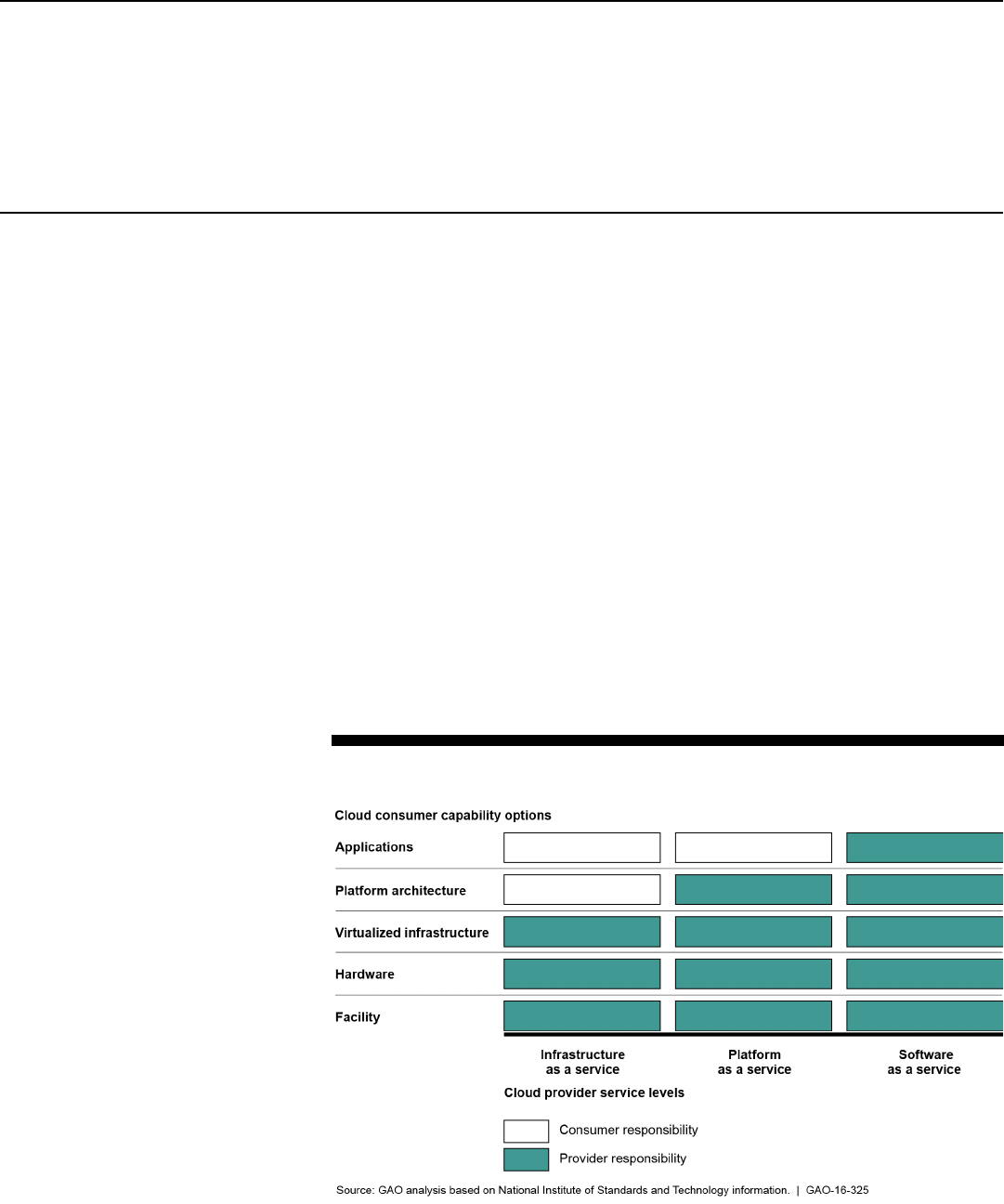
Page 5 GAO-16-325 Cloud Computing
resources and run its own software, including operating systems and
applications. The agency does not manage or control the underlying
infrastructure but controls and configures operating systems, storage,
deployed applications, and possibly, selected networking components
(e.g., host firewalls).
• Platform as a service—the agency deploys its own or acquired
applications created using programming languages and tools
supported by the provider. The agency does not manage or control
the underlying infrastructure, but controls and configures the deployed
applications.
• Software as a service—the agency uses the service provider’s
applications, which are accessible from various client devices through
an interface such as a Web browser (e.g., Web-based e-mail system).
The agency does not manage or control the underlying infrastructure
or the individual application capabilities.
As can be seen in figure 1, each service model offers unique functionality,
with consumer control of the environment decreasing from infrastructure
to platform to software.
Figure 1: Cloud Service Provider and Consumer Responsibilities for the Three
Service Models

Page 6 GAO-16-325 Cloud Computing
NIST has also defined four deployment models for providing cloud
services: private, community, public, and hybrid.
• In a private cloud, the service is set up specifically for one
organization, although there may be multiple customers within that
organization and the cloud may exist on or off the customer’s
premises.
• In a community cloud, the service is shared by organizations with
similar requirements. The cloud may be managed by the
organizations or a third party and may exist on or off an organization’s
premises.
• A public cloud is available to the general public and is owned and
operated by the service provider.
• A hybrid cloud is a composite of two or more other deployment
models (private, community, or public) that are bound together by
standardized or proprietary technology.
According to federal guidance, these deployment models determine the
number of consumers and the nature of other consumers’ data that may
be present in a cloud environment. A public cloud should not allow a
consumer to know or control other consumers of a cloud service
provider’s environment. However, a private cloud can allow for ultimate
control in selecting who has access to a cloud environment. Community
clouds and hybrid clouds allow for a mixed degree of control and
knowledge of other consumers.
According to OMB, the federal government needs to shift from building
custom computer systems to adopting cloud technologies and shared
services, which will improve the government’s operational efficiencies and
result in substantial cost savings. To help agencies achieve these
benefits, OMB required agencies in 2010 to immediately shift to a “Cloud
First” policy and increase their use of available cloud and shared services
whenever a secure, reliable, and cost-effective cloud service exists.
7
7
OMB, 25 Point Implementation Plan to Reform Federal Information Technology
Management (Washington, D.C.: Dec. 9, 2010).
OMB Has Undertaken
Initiatives and Issued
Guidance to Increase
Agency Adoption of Cloud
Computing Services

Page 7 GAO-16-325 Cloud Computing
In February 2011, OMB issued the Federal Cloud Computing Strategy,
8
as called for in its 25-Point Plan. The strategy provided definitions of
cloud computing services; benefits of cloud services, such as accelerating
data center consolidations; a decision framework for migrating services to
a cloud environment;
9
case studies to support agencies’ migration to
cloud computing services; and roles and responsibilities for federal
agencies. For example, the strategy stated that NIST’s role is to lead and
collaborate with federal, state, and local government agency chief
information officers, private sector experts, and international bodies to
identify standards and guidance and prioritize the adoption of cloud
computing services. In addition, the strategy stated that agency cloud
service contracts should include SLAs designed to meet agency
requirements.
In a December 2011 memo, OMB established the Federal Risk and
Authorization Management Program (FedRAMP),
10
a government-wide
program intended to provide a standardized approach to security
assessment, authorization,
11
and continuous monitoring for cloud
computing products and services.
12
All federal agencies must meet
FedRAMP requirements when using cloud services and the cloud service
providers must implement the FedRAMP security requirements in their
cloud environment. To become authorized, cloud service providers
provide a security assessment package to be reviewed by the FedRAMP
8
OMB, Federal Cloud Computing Strategy (Washington, D.C.: Feb. 8, 2011).
9
The decision framework, among other things, identifies several key areas for determining
the readiness for moving to a cloud environment, including the ability of the cloud service
provider to address government security requirements.
10
OMB, Security Authorization of Information Systems in Cloud Computing Environments
(Washington, D.C.: Dec. 8, 2011).
11
Security authorization is the official management decision given by a senior official of an
organization to authorize operation of an information system and to explicitly accept the
risk to organizational operations and assets, individuals, other organizations, and the
nation, based on the implementation of an agreed-on set of security controls.
12
FedRAMP’s security assessment framework encompasses four process areas
(document, assess, authorize, and monitor) that are based on the six steps within the
framework described in NIST’s Guide for Applying the Risk Management Framework to
Federal Information Systems: A Security Life Cycle Approach, SP 800-37, Revision 1
(Gaithersburg, MD.: February 2010).

Page 8 GAO-16-325 Cloud Computing
Joint Authorization Board,
13
which may grant a provisional authorization.
Federal agencies can leverage cloud service provider authorization
packages for review when granting an agency authority to operate, where
this reuse is intended to save time and money.
Further, at the direction of OMB, the Chief Information Officers Council
and the Chief Acquisition Officers Council issued, in February 2012,
guidance to help agencies acquire cloud services.
14
In particular, the
guidance highlights that SLAs are a key factor for ensuring the success of
cloud based services and that federal agencies should include an SLA
when creating a cloud computing contract or as a reference. The
guidance provides important areas of an SLA to be addressed; for
example, it states that an SLA should define performance with clear terms
and definitions, demonstrate how performance is being measured, and
identify what enforcement mechanisms are in place to ensure the
conditions are being met.
In addition, NIST, in its role designated by OMB in the Federal Cloud
Computing Strategy, collaborated with private sector organizations to
release cloud computing guidance,
15
which affirms the importance of
using an SLA when acquiring cloud computing services.
Moreover, a number of other public and private sector organizations have
issued research on the incorporation of an SLA in a cloud computing
13
The Joint Authorization Board is composed of the chief information officers from DOD,
DHS, and the General Services Administration and establishes the baseline controls for
FedRAMP and criteria for accrediting third-party independent assessment organizations.
14
Chief Information Officer’s Council and Chief Acquisition Officers Council, Creating
Effective Cloud Computing Contracts for the Federal Government, Best Practices for
Acquiring IT as a Service.
15
See, for example, NIST, US Government Cloud Computing Technology Roadmap
Volume 1: High-Priority Requirements to Further USG Agency Cloud Computing Adoption,
NIST SP 500-293, (Gaithersburg, MD.: October 2014); and NIST, Cloud Computing
Synopsis and Recommendations, NIST SP 800-146, (Gaithersburg, MD.: May 2012).

Page 9 GAO-16-325 Cloud Computing
contract.
16
According to these studies, an SLA is important because it
ensures that services are being performed at the levels specified in the
cloud computing contract, can significantly contribute to avoiding conflict,
and can facilitate the resolution of an issue before it escalates into a
dispute. The studies also highlight that a typical SLA describes levels of
service using various attributes such as availability, serviceability or
performance, and specifies thresholds and financial penalties associated
with a failure to comply with these thresholds.
We have previously reported on federal agencies’ efforts to implement
cloud computing services and on progress oversight that agencies have
made to help federal agencies in those efforts. These include
• In May 2010, we reported on the efforts of multiple agencies to ensure
the security of government-wide cloud computing services.
17
We
noted that, while OMB, the General Services Administration (GSA),
and NIST had initiated efforts to ensure secure cloud computing
services, OMB had not yet finished a cloud computing strategy; GSA
had begun a procurement for expanding cloud computing services for
its website that served as a central location for federal agencies to
purchase cloud services, but had not yet developed specific plans for
establishing a shared information security assessment and
authorization process; and NIST had not yet issued cloud-specific
security guidance. We recommended that OMB establish milestones
to complete a strategy for federal cloud computing and ensure it
addressed information security challenges. These include having a
process to assess vendor compliance with government information
security requirements and division of information security
responsibilities between the customer and vendor.
16
See, for example, European Commission Directorate General for Communications
Networks, Content and Technology, Cloud Service Level Agreement Standardization
Guidelines (Brussels, Belgium: June 2014); MITRE, Cloud SLA Considerations for the
Government Consumer (September 2012); Cloud Standards Customer Council, Practical
Guide to Cloud Service Agreements, Version 2.0 (April 2015); and Gartner, Best Practices
for Service Level Agreements for Software as a Service (Stamford, CT: November 2010).
17
GAO, Information Security: Federal Guidance Needed to Address Control Issues with
Implementing Cloud Computing, GAO-10-513 (Washington, D.C.: May 27, 2010).
Agencies Are Taking Steps
to Implement Prior GAO-
Identified Improvements
for Cloud-based
Computing Services

Page 10 GAO-16-325 Cloud Computing
OMB agreed with our recommendations and subsequently published
a strategy in February 2011 that addressed the importance of
information security when using cloud computing, but it did not fully
address several key challenges confronting agencies, such as the
appropriate use of attestation standards for control assessments of
cloud computing service providers, and division of information
security-related responsibilities between customer and provider. We
also recommended that GSA consider security in its procurement for
cloud services, including consideration of a shared assessment and
authorization process. GSA generally agreed with our
recommendations and has since developed the FedRAMP program.
Finally, we recommended that NIST issue guidance specific to cloud
computing security. NIST agreed with our recommendations and has
since issued multiple publications that address such guidance.
• In April 2012, we reported that more needed to be done to implement
OMB’s 25-Point Plan and measure its results.
18
Among other things,
we reported that, of the 10 key action items that we reviewed, 3 had
been completed and 7 had been partially completed by December
2011. In particular, OMB and agencies’ cloud-related efforts only
partially addressed requirements. Specifically, agencies’ plans were
missing key practices, such as a discussion of needed resources, a
migration schedule, and plans for retiring legacy systems. As a result,
we recommended, among other things, that the Secretaries of
Homeland Security and Veterans Affairs, and the Attorney General
direct their respective CIOs to complete practices missing from the
agencies’ plans for migrating services to a cloud computing
environment. Officials from each of the agencies generally agreed
with our recommendations and have taken steps to implement them.
• In July 2012, we reported on the efforts of seven agencies to
implement three services by June 2012, including the challenges
associated with doing so.
19
Specifically, we reported that selected
federal agencies had made progress in implementing OMB’s “Cloud
First” policy. Seven agencies had implemented 21 cloud computing
solutions and had spent a total of $307 million for cloud computing in
18
GAO, Information Technology Reform: Progress Made; More Needs to Be Done to
Complete Actions and Measure Results, GAO-12-461 (Washington, D.C.: Apr. 26, 2012).
19
GAO, Information Technology Reform: Progress Made but Future Cloud Computing
Efforts Should Be Better Planned, GAO-12-756 (Washington, D.C.: July 11, 2012).

Page 11 GAO-16-325 Cloud Computing
fiscal year 2012, about 1 percent of their total IT budgets. While each
of the seven agencies had submitted plans to OMB for implementing
their cloud services, a majority of the plans were missing required
elements. Agencies also identified opportunities for future cloud
service implementations, such as moving storage and help desk
services to a cloud environment. Agencies also shared seven
common challenges that they experienced in moving services to cloud
computing. We made recommendations to the agencies to develop
planning information, such as estimated costs and legacy IT systems’
retirement plans, for existing and planned services. The agencies
generally agreed with our recommendations and have taken actions
to implement them.
• In September 2014, we reported on the aforementioned seven
agencies’ efforts to implement additional cloud computing services,
any reported cost savings as a result of implementing those cloud
services, and challenges associated with the implementation.
20
All of
the seven federal agencies we reviewed had added more cloud
computing services; the number of cloud services implemented by
them had increased from 21 to 101 between fiscal years 2012 and
2014. In addition, agencies had collectively doubled the percentage of
their IT budgets from 1 to 2 percent during the fiscal year 2012–14
period. Further, the agencies reported a collective cost savings of
about $96 million through fiscal year 2013. We made
recommendations to the agencies to assess their IT investments that
had yet to be evaluated for suitability for cloud computing services.
For the most part, the agencies generally agreed with our
recommendations and have taken actions to implement them.
20
GAO, Cloud Computing: Additional Opportunities and Savings Need to Be Pursued,
GAO-14-753 (Washington, D.C.: Sept. 25, 2014).

Page 12 GAO-16-325 Cloud Computing
Based on our analysis of practices recommended by the ten
organizations with expertise in the area of SLAs and OMB, we compiled
the following list of ten practices that are key for federal agencies to
incorporate into a contract to help ensure services are performed
effectively, efficiently, and securely for cloud computing services. The key
practices are organized by the following management areas—roles and
responsibilities, performance measures, security, and consequences.
21
Table 1: Key Practices for a Cloud Computing Service Level Agreement
Roles and responsibilities
1. Specify roles and responsibilities of all parties with respect to the SLA, and, at a minimum, include agency and cloud providers.
2. Define key terms, such as dates and performance.
Performance measures
3. Define clear measures for performance by the contractor. Include which party is responsible for measuring performance.
Examples of such measures would include
• Level of service (e.g., service availability—duration the service is to be available to the agency).
• Capacity and capability of cloud service (e.g., maximum number of users that can access the cloud at one time and ability of
provider to expand services to more users).
• Response time (e.g., how quickly cloud service provider systems process a transaction entered by the customer, response time
for responding to service outages).
4. Specify how and when the agency has access to its own data and networks. This includes how data and networks are to be
managed and maintained throughout the duration of the SLA and transitioned back to the agency in case of exit/termination of
service.
5. Specify the following service management requirements:
• How the cloud service provider will monitor performance and report results to the agency.
• When and how the agency, via an audit, is to confirm performance of the cloud service provider.
6. Provide for disaster recovery and continuity of operations planning and testing, including how and when the cloud service
provider is to report such failures and outages to the agency. In addition, how the provider will remediate such situations and
mitigate the risks of such problems from recurring.
21
This report identifies key practices for cloud computing SLAs, including a key practice
that specifies consequences for missing SLA performance measures. This key practice is
defined only in terms of consequences and available remedies that are specifically linked
to the SLA performance measures, and does not refer to enforcement mechanisms (such
as termination for default) that are made available in the standard terms of federal
government contracts generally.
Key Practices for
Cloud Computing
Service Level
Agreements Can
Help Agencies
Manage Services
More Effectively

Page 13 GAO-16-325 Cloud Computing
7. Describe any applicable exception criteria when the cloud provider’s performance measures do not apply (e.g., during scheduled
maintenance or updates).
Security
8. Specify metrics the cloud provider must meet in order to show it is meeting the agency’s security performance requirements for
protecting data (e.g., clearly define who has access to the data and the protections in place to protect the agency’s data).
9. Specifies performance requirements and attributes defining how and when the cloud service provider is to notify the agency when
security requirements are not being met (e.g., when there is a data breach).
Consequences
10. Specify a range of enforceable consequences, such as penalties, for non-compliance with SLA performance measures.
Source: GAO analysis of data from public and private organizations. I GAO-16-325
Roles and responsibilities: (1) Define the roles and responsibilities of
the major stakeholders involved in the performance of the SLA and cloud
contract. These definitions would include, for example, the persons
responsible for oversight of the contract, audit, performance
management, maintenance, and security. (2) Define key terms, including
activation date, performance, and identify any ambiguities in the
definitions of cloud computing terms in order to provide the agency with
the level of service they can expect from their cloud provider. Without
clearly defined roles, responsibilities, and terms, the agency may not be
able to appropriately measure the cloud provider’s performance.
Performance measures: (1) Define the performance measures of the
cloud service, including who is responsible for measuring performance.
These measures would include, among other things, the availability of the
cloud service; the number of users that can access the cloud at any given
time; and the response time for processing a customer transaction.
Providing performance parameters provides both the agency and service
provider with a well-defined set of instructions to be followed. (2) Specify
how and when the agency would have access to its data, including how
data and networks will be managed and maintained throughout the life
cycle of the service. Provide any data limitations, such as who may or
may not have access to the data and if there are any geographic
limitations. (3) Specify management requirements, for example, how the
cloud service provider would monitor the performance of the cloud, report
incidents, and how and when they would plan to resolve them. In addition,
identify how and when the agency would conduct an audit to monitor the
performance of the service provider, including access to the provider’s
performance logs and reports. (4) Provide for disaster recovery and
continuity of operations planning and testing. This includes, among other
things, performing a risk management assessment; how the cloud service
would be managed by the provider in the case of a disaster; how data
would be recovered; and what remedies would apply during a service

Page 14 GAO-16-325 Cloud Computing
failure. (5) Describe applicable exception criteria for when the cloud
provider’s service performance measures do not apply, such as during
scheduled cloud maintenance or when updates occur. Without any type
of performance measures in place, agencies would not be able to
determine whether the cloud services under contract are meeting
expectations.
Security: (1) Specify the security performance requirements that the
service provider is to meet. This would include describing security
performance metrics for protecting data, such as data reliability, data
preservation, and data privacy. Cleary define the access rights of the
cloud service provider and the agency as well as their respective
responsibilities for securing the data, applications, and processes to meet
all federal requirements. (2) Describe what would constitute a breach of
security and how and when the service provider is to notify the agency
when the requirements are not being met. Without these safeguards,
computer systems and networks as well as the critical operations and key
infrastructures they support may be lost, and information—including
sensitive personal information—may be compromised, and the agency’s
operations could be disrupted.
Consequences: Specify a range of enforceable consequences, including
the terms under which a range of penalties and remedies would apply for
non-compliance with the SLA performance measures. Identify how such
enforcement mechanisms would be imposed or exercised by the agency.
Without penalties and remedies, the agency may lack leverage to enforce
compliance with contract terms when situations arise.
Guidance issued in February 2012, at the direction of OMB highlighted
SLAs as being a key factor for ensuring the success of cloud-based
services and advised that federal agencies should include an SLA or a
reference within the contract when creating a cloud computing contract.
The guidance provides areas of an SLA to be addressed; for example, it
states that an SLA should define performance with clear terms and
definitions, demonstrate how performance is being measured, and
identify what enforcement mechanisms are in place to ensure the
conditions are being met.
However, the guidance addressed only seven of the ten key practices
listed in table 1 that could help agencies better track performance and
thus ensure the effectiveness of their cloud services. Specifically, the
guidance did not specify how and when the agency would have access to
OMB Guidance Addresses
Seven of the Ten Key
Practices

Page 15 GAO-16-325 Cloud Computing
its data, provide for disaster recovery and continuity of operations
planning, and describe any exception criteria.
OMB staff members said that, although the guidance drafted by the Chief
Information Officers Council and the Chief Acquisition Officers Council
was a good start, including all ten key practices should be considered.
Without complete guidance from OMB, there is limited assurance that
agencies will apply all the key SLA practices into their cloud computing
contracts, and therefore may be unable to hold contractors accountable
when performance falls short of their goals.
Many of the 21 cloud service contracts we reviewed at the five selected
agencies incorporated a majority of the key practices, but the number of
practices differed among contracts. Specifically, seven of the cloud
service contracts reviewed met all 10 of the key practices. This included
three from DHS, three from Treasury, and one from VA. The following
figure shows the total cloud service contracts reviewed and the number
that met the 10 key practices at the five selected agencies.
Selected Agencies
Incorporated Most of
the Key Practices, but
Differed in Addressing
Them
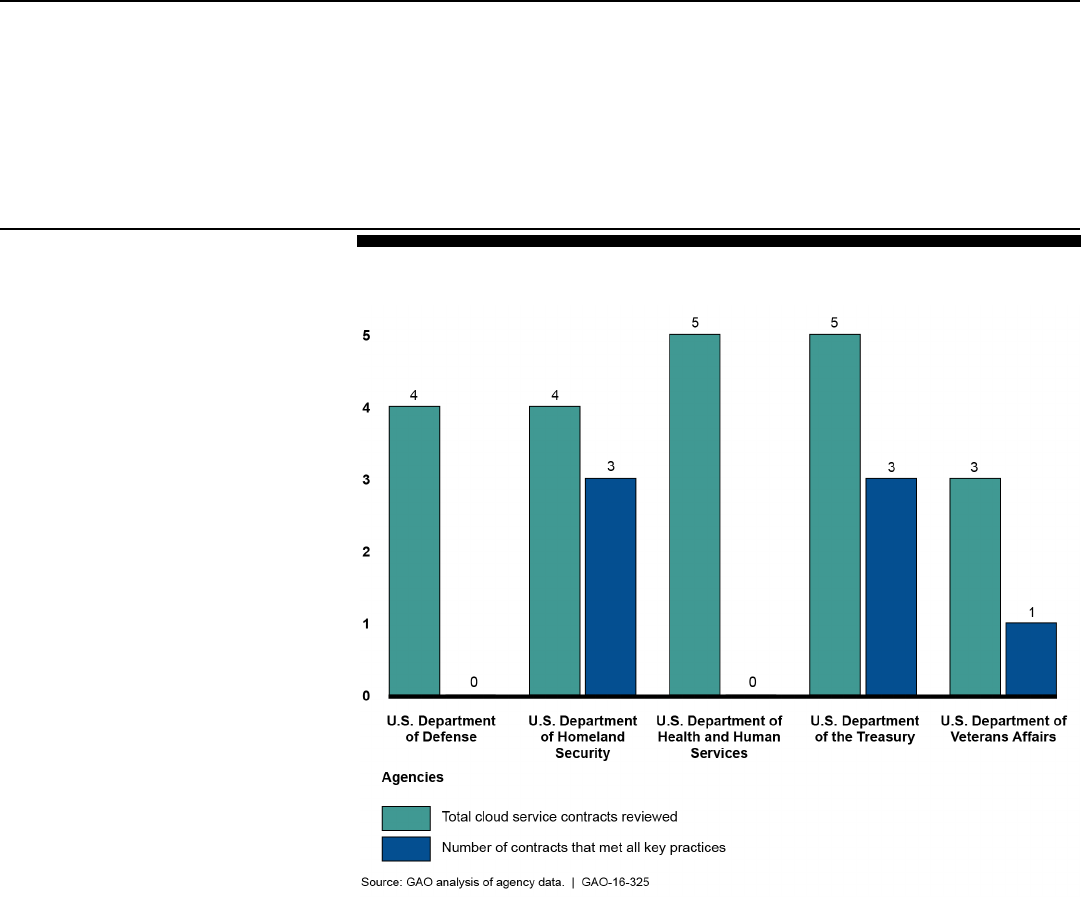
Page 16 GAO-16-325 Cloud Computing
Figure 2: Number of Cloud Service Contracts That Met All 10 Key Practices at
Selected Agencies
Of the remaining 14 cloud service contracts, 13 incorporated five or more
of the key practices, and 1 did not meet any of the key practices. Figure 3
shows each of the cloud service contracts we reviewed and the extent to
which the agency had included key practices in its SLA contracts.
Appendix II includes our analysis of all the cloud services we reviewed, by
agency.
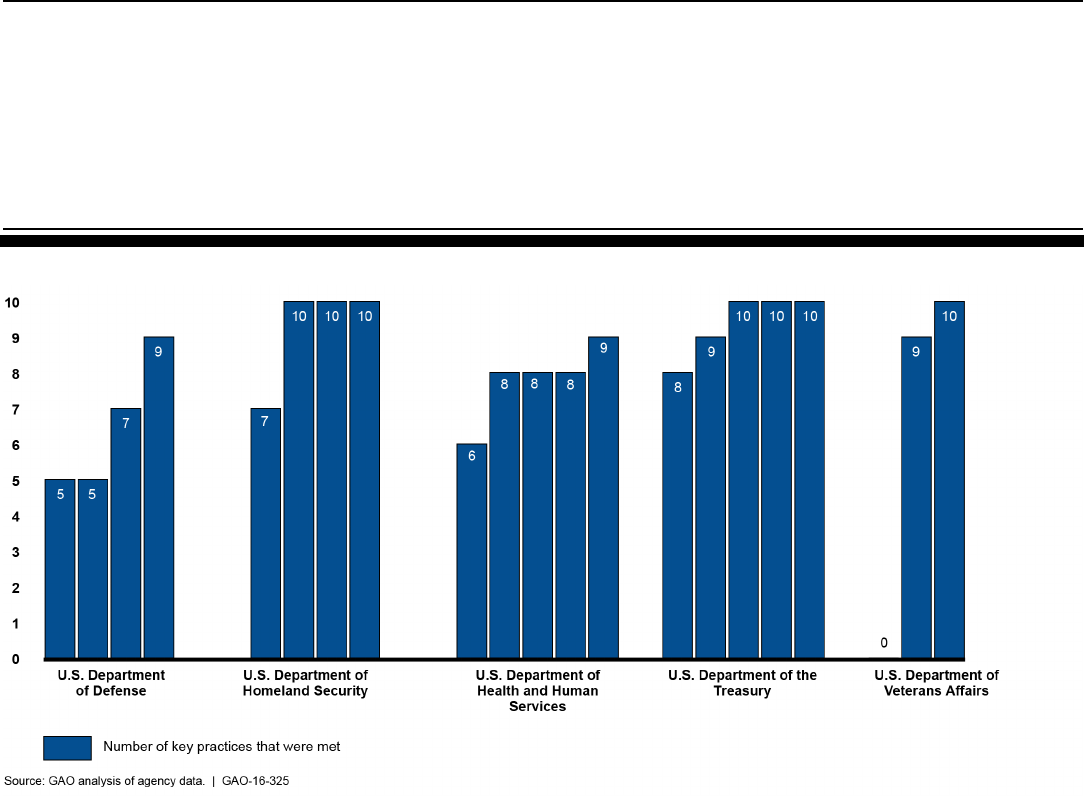
Page 17 GAO-16-325 Cloud Computing
Figure 3: Number of 10 Key Practices Met on 21 Cloud Service Contracts at Selected Agencies
A primary reason that the agencies did not include all of the practices was
that they lacked guidance that addresses these SLA practices. Of the five
agencies, only DOD had developed cloud service contracting guidance
that addressed some of the practices. More specifically, DOD’s guidance
only addressed three of the key practices: disaster recovery and
continuity of operations planning, metrics on security performance
requirements, and notifying the agency when there is a security breach.
In addition, the guidance partially addressed the practice on access to
agency data, specifically, with regard to transitioning data back to the
agency in case of exit/termination of service.
Agency officials responsible for the cloud services that did not meet or
only partially met key practices provided the following additional reasons
for not including all ten practices:
• Officials from DOD’s Office of the Chief Information Officer told us that
the reason key practices were not always fully addressed is that,
when the contracts and associated SLAs were developed, they did
not have the aforementioned DOD guidance on cloud service
acquisition and use—namely, the agency’s memorandum on

Page 18 GAO-16-325 Cloud Computing
acquiring cloud services that was released in December 2014,
22
and
the current Defense Federal Acquisition Regulation Supplement,
which was finalized in August 2015.
23
However, as previously stated,
this updated guidance addressed three of the ten key practices, and
part of one other.
• Officials from DHS’s Office of the Chief Information Officer stated that
the Infrastructure as a Service cloud service addressed the partially
met and not met key practices but did not provide supporting
documentation to show that the practices were in place. If key
practices have not been incorporated, the system may have
decreased performance and the cloud service may not meet its
intended goals.
• HHS officials from the National Institutes of Health attributed unmet or
partially met practices for four cloud services—Remedy Force,
Medidata, the BioMedical Imaging and BioEngineering website, and
the Drug Abuse public website—to the fact that they evaluate the
cloud vendor’s ability to meet defined agency needs, rather than
negotiate with vendors on SLA requirements. While this may explain
their shortfalls in not addressing all SLA key practices, the agency
may be placing their systems at risk of not conducting adequate
service level measurements, which may result in decreased service
levels.
HHS officials from the Administration of Children and Families stated
that the reason key practices were partially addressed or not
addressed for the Grant Solutions cloud service was that these
practices were being managed by HHS personnel using other tools
and plans, rather than via the SLA established for this service. For
example, according to the officials, they are using a management
information system to monitor performance of the cloud provider. In
addition, with respect to disaster management, the officials said that
they have their own disaster recovery plan. Nonetheless, leading
studies show that these practices should still be incorporated as part
of the cloud service contract to ensure agencies have the proper
control over their cloud services.
22
DOD Memorandum, Updated Guidance on the Acquisition and Use of Commercial
Cloud Computing Services (December 15, 2014).
23
80 Fed. Reg. 51739 (August 26, 2015), adding 48 C.F.R. Subpart 239.76.

Page 19 GAO-16-325 Cloud Computing
• Treasury officials said the reason, among other things, the SLAs for
Treasury Web Services and IRS Portal Environment only partially met
certain key practices was because the practices were being provided
by support contractors hired by the cloud service provider, and were
not directly subject to the SLAs established between Treasury and the
cloud service provider. Nonetheless, while having contractors perform
practices is an acceptable approach, Treasury officials were unable to
provide supporting documentation to show that support contractors
were assisting with the practices in question.
• Officials from VA’s Office of Information and Technology said the
reason the key practice associated with penalties and remedies was
not included in the Terremark SLA was because penalties were
addressed within other parts of the contract; however, officials were
not able to provide documentation identifying such penalties. With
regard to an SLA for eKidney, officials told us they had not addressed
any of the key practices due to the fact that an SLA was not
developed between the agency and cloud service provider. Without
including an SLA in cloud service contracts, the agency runs the risk
of not having the mechanisms in place to effectively evaluate or
control contractor performance.
Until these agencies develop SLA guidance and incorporate all key
practices into their cloud computing contracts, they may be limited in their
ability to measure the performance of the services, and, therefore, may
not receive the services they require.
Although OMB has provided agencies guidance to better manage
contracts for cloud computing services, this guidance does not include all
the key practices that we identified as necessary for effective SLAs.
Similarly, Defense, Homeland Security, Health and Human Services,
Treasury, and Veterans Affairs have incorporated many of the key
practices in the cloud service contracts they have entered into. Overall,
this is a good start towards ensuring that agencies have mechanisms in
place to manage the contracts governing their cloud services. However,
given the importance of SLAs to the management of these million-dollar
service contracts, agencies can better protect their interests by
incorporating the pertinent key practices into their contracts in order to
ensure the delivery and effective implementation of services they contract
for. In addition, agencies can improve management and control over their
cloud service providers by implementing all recommended and applicable
SLA key practices.
Conclusions

Page 20 GAO-16-325 Cloud Computing
• To ensure that agencies are provided with more complete guidance
for contracts for cloud computing services, we recommend that the
Director of OMB include all ten key practices in future guidance to
agencies.
• To help ensure continued progress in the implementation of effective
cloud computing SLAs, we recommend that the Secretary of Defense
direct the appropriate officials to ensure key practices are fully
incorporated for cloud services as the contracts and associated SLAs
expire. These efforts should include updating the DOD memorandum
on acquiring cloud services and current Defense Acquisition
Regulations System to more completely include the key practices.
• To help ensure continued progress in the implementation of effective
cloud computing SLAs, we recommend that the Secretaries of Health
and Human Services, Homeland Security, Treasury, and Veterans
Affairs direct appropriate officials to develop SLA guidance and
ensure key practices are fully incorporated as the contract and
associated SLAs expire.
In commenting on a draft of this report, four of the agencies—DOD, DHS,
HHS, and VA—agreed with our recommendations; and OMB and one
agency (Treasury) had no comments. The specific comments from each
agency are as follows:
• In an e-mail received on March 25, 2016, OMB staff from the Office of
E-Government and Information Technology stated that the agency
had no comments at this time.
• In written comments, the Department of Defense concurred with our
recommendation and described actions it plans to take to address the
recommendation. Specifically, DOD stated that it will update its cloud
computing guidance and contracting guidance as appropriate. The
Department of Defense’s comments are reprinted in appendix III.
• In written comments, the Department of Homeland Security concurred
with our recommendation and described actions it plans to take to
address the recommendation. Specifically, the department will
establish common cloud computing service level agreement guidance.
DHS also provided technical comments, which we have incorporated
in the report as appropriate. The Department of Homeland Security’s
comments are provided in appendix IV.
Recommendations for
Executive Action
Agency Comments
and Our Evaluation

Page 21 GAO-16-325 Cloud Computing
• In written comments, the Department of Health and Human Services
concurred with our recommendation, but noted that it was not directed
by a federal mandate. We acknowledge that our recommendation is
not directed by a mandate; however, implementing leading practices
for cloud computing can result in significant benefits. The department
also provided technical comments, which we have incorporated in the
report as appropriate. The Department of Health and Human
Service’s comments are provided in appendix V.
• In an e-mail received on March 18, 2016, an audit liaison from the
D
epartment of the Treasury’s Office of the CIO stated that the
department had no comment.
• In written comments, the Department of Veterans Affairs concurred
w
ith our recommendation and described planned actions to address it.
For example, the department will develop service level agreement
guidance to include the 10 key practices. The Department of Veterans
Affairs comments are provided in appendix VI.
W
e are sending copies of this report to interested congressional
committees; the Secretaries of Defense, Health and Human Services,
Homeland Security, the Treasury, and Veterans Affairs; and the Director
of the Office of Management and Budget, and other interested parties.
This report will also be available at no charge on our website at
http://www.gao.gov.
If you or your staffs have any questions on matters discussed in this
report, please contact me at (202) 512-9286 or pow[email protected]ov.
Contact points for our Offices of Congressional Relations and Public
Affairs may be found on the last page of this report. GAO staff who made
major contributions to this report are listed in appendix VII.
D
avid A. Powner
Director
Information Technology Management Issues

Appendix I: Objectives, Scope, and
Methodology
Page 22 GAO-16-325 Cloud Computing
Our objectives were to (1) identify key practices used in cloud computing
service level agreements (SLA) to ensure service is performed at
specified levels and (2) determine the extent to which federal agencies
have incorporated such practices into their cloud computing service level
agreements.
To identify key practices used in cloud computing service level
agreements, we analyzed SLA research, studies, and guidance
developed and used by federal agencies and private entities.
We then performed a comparative analysis of the practices to identify the
practices that were recommended by at least two sources. Specifically,
we analyzed information from publications and related documentation
issued by the following ten public and private organizations to determine
key SLA practices:
• Federal Chief Information Officer Council
• Chief Acquisitions Officers Council
• National Institute of Standards and Technology
• European Commission Directorate General for Communications
Networks, Content and Technology
• Office of Management and Budget
• Gartner
• MITRE Corporation
• Cloud Standards Customer Council
• International Organization for Standardization
• International Electrotechnical Commission
Next, we organized these practices into management areas and validated
our analysis through interviews with experts from these organizations. We
also had officials from the Office of Management and Budget (OMB)
review and validate that these practices are the ones the office expects
federal agencies to follow. In cases where experts disagreed, we
analyzed their responses, including the reasons they disagreed, and
made changes as appropriate. These actions resulted in our list of key
practices for cloud service SLAs.
To determine the extent to which federal agencies have incorporated key
practices into their cloud computing contracts, we selected five agencies
to review based, in part, on those with the largest fiscal year 2015 IT
budgets and planned spending on cloud computing services. The
agencies selected were the Departments of Defense (DOD), Homeland
Security (DHS), Health and Human Services (HHS), Treasury, and
Veterans Affairs (VA).
Appendix I: Objectives, Scope, and
Methodology

Appendix I: Objectives, Scope, and
Methodology
Page 23 GAO-16-325 Cloud Computing
We selected these agencies based on the following two factors. First,
they have the largest planned IT budgets for fiscal year 2015. Their
budgets, which collectively totaled $57 billion, represent about 72 percent
of the total federal IT budget ($78 billion). Second, these agencies plan to
spend relatively large amounts on cloud computing. Specifically, based
on our analysis of OMB’s fiscal year 2015 budget data, each of the five
departments were in the top 10 for the largest amount budgeted for cloud
computing and collectively planned to spend $1.2 billion on cloud
computing, which represents about 57 percent of the total amount that
federal agencies plan to invest in cloud computing ($2.1 billion).
To select and review the cloud services used by the agencies, we
obtained an inventory of cloud services for each of the five agencies, and
then, for each agency, we listed their cloud services in a random fashion
and selected the first two cloud services in the list for each of the three
major cloud service models (infrastructure, platform, and software). In
certain cases, the agency did not have two cloud services for a service
model, so the number chosen for that service model was less than two.
This resulted in a non-generalizable sample of 23 cloud services.
However, near the end of our engagement, agencies identified 2 of the
services as being in a pilot stage (one from DHS, and one from HHS),
and thus not operational. We excluded these services from our analysis,
as our methodology to only assess operational cloud services. Due to the
stage of the engagement, we were unable to select additional services for
review. Further, because no computer-generated data was used we
determined that there were no data reliability issues.
For each of the selected services, we compared its cloud service contract
(if one existed) and any associated SLA documentation to our list of key
practices to determine if there were variances and, if so, their cause and
impact. To do so, two team analysts independently reviewed the cloud
service contracts against the key practices using the following criteria:
• Met: all aspects of the key practices were fully addressed.
• Partially met: some key practices were addressed.
• Did not meet: no key practices were addressed.
In cases where analysts differed on the assessments, we discussed what
the rating should be until we reached a consensus. We also interviewed
agency officials to corroborate our analysis and identify the causes and
impacts of any variances.

Appendix I: Objectives, Scope, and
Methodology
Page 24 GAO-16-325 Cloud Computing
We conducted this performance audit from January 2015 to April 2016 in
accordance to generally accepted government auditing standards. Those
standards require that we plan and perform the audit to obtain sufficient,
appropriate evidence to provide a reasonable basis for our findings and
conclusions based on our audit objectives. We believe that the evidence
obtained provides a reasonable basis for our findings and conclusions
based on our audit objectives.
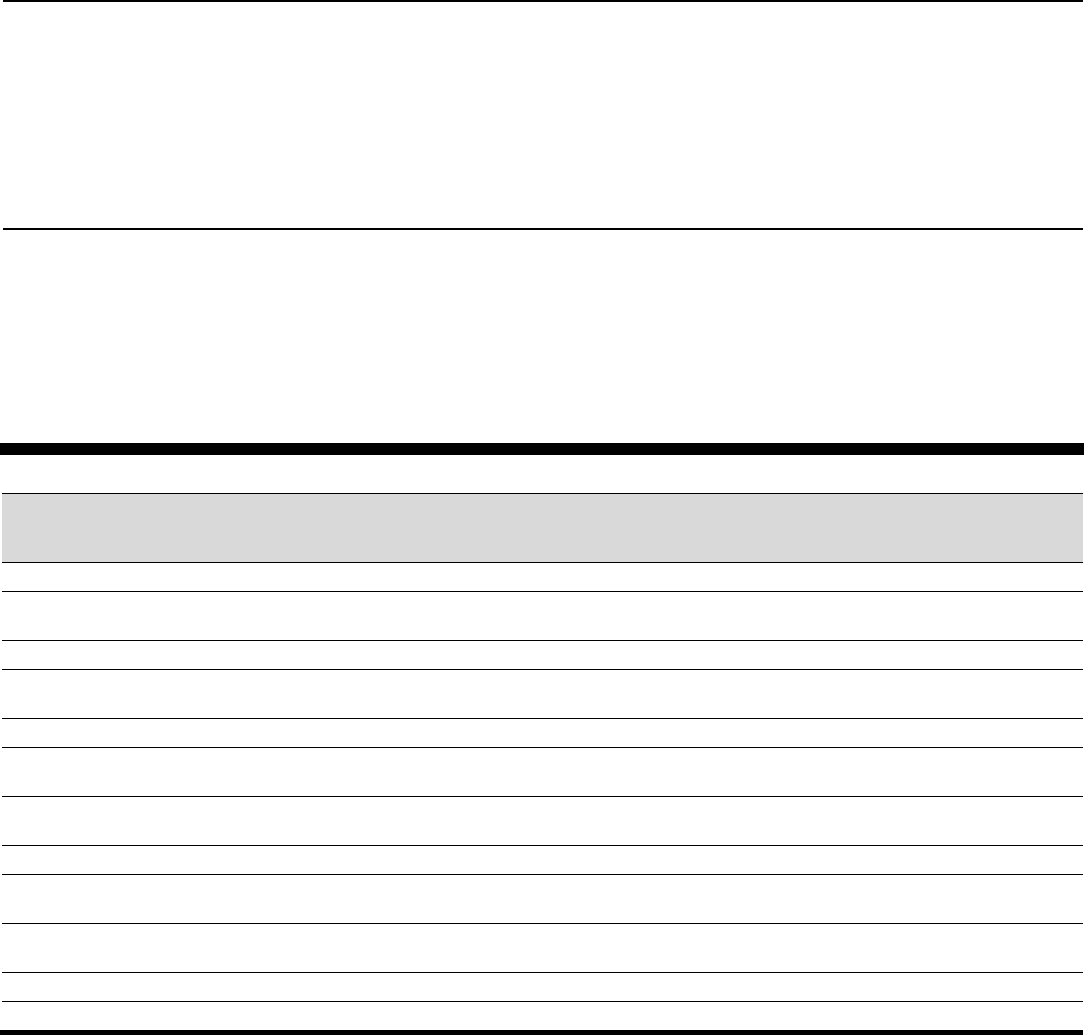
Appendix II: Analysis of Agencies’ Cloud
Service SLAs against Key Practices
Page 25 GAO-16-325 Cloud Computing
The following tables show each of the five agencies’—DOD, DHS, HHS,
Treasury, and VA—cloud services we assessed and our analysis of each
contract for cloud services against the key practices. In cases where the
SLA partially met a practice, the analysis also includes discussion of the
rationale for why that assessment was provided.
(Note: M – met, P – partially met, NM – did not meet.)
Table 2: Analysis of DOD’s Cloud Service SLAs against Key Practices
DOD cloud services
Air Force,
Integrated Risk
Information System
Air Force,
Case Tracking
Army, Email
as a Service
Navy, Navy
Web Portal
Key practices
M
P
NM
M
P
NM
M
P
NM
M
P
NM
Stakeholder roles and
responsibilities
X
X
X
X
Terms and dates
X
X
X
X
Measurable
performance objectives
X
X
X
X
Access to agency data
X
X
X
X
Service management
requirements
X
X
X
X
Disaster recovery
planning
X
X
X X
Exception criteria
X
X
X
X
Security performance
requirements
X
X
X
X
Notification of security
breach
X
X
X
X
Consequences
X
X
X
X
Total
5
1
4
9
1
7
2
1
5
2
3
Source: GAO analysis of DOD data. I GAO-16-325
With regard to those services that partially met key practices:
Air Force
• The Integrated Risk Information System partially addressed one key
practice on how and when the agency was to have access to its data
and networks. It included how the data would be transitioned, but did
not specify how access to data and networks was to be managed or
maintained.
Appendix II: Analysis of Agencies’ Cloud
Service SLAs against Key Practices

Appendix II: Analysis of Agencies’ Cloud
Service SLAs against Key Practices
Page 26 GAO-16-325 Cloud Computing
• The Case Tracking cloud service partially included the practice on
specifying metrics for security performance requirements. It specified
how security needs were to be met but did not give specific metrics for
doing so.
Army
• Email as a Service partially addressed two key practices. For the
practice on specifying service management requirements, it specified
how the cloud service provider was to monitor performance, but did
not address how the provider was to report performance or how the
agency was to confirm the performance. For the other practice on
specifying metrics for security performance requirements, it included
how security needs were to be met but did not specify the security
metrics.
Navy
• The Web Portal partially incorporated two key practices. For the
practice on how and when the agency was to have access to its data
and networks, it specified how the data was to be transitioned, but not
how access to data and networks was to be managed or maintained.
For the other practice on specifying metrics for security performance
requirements, it included monitoring of the contractor regarding
security, but did not specify security metrics.
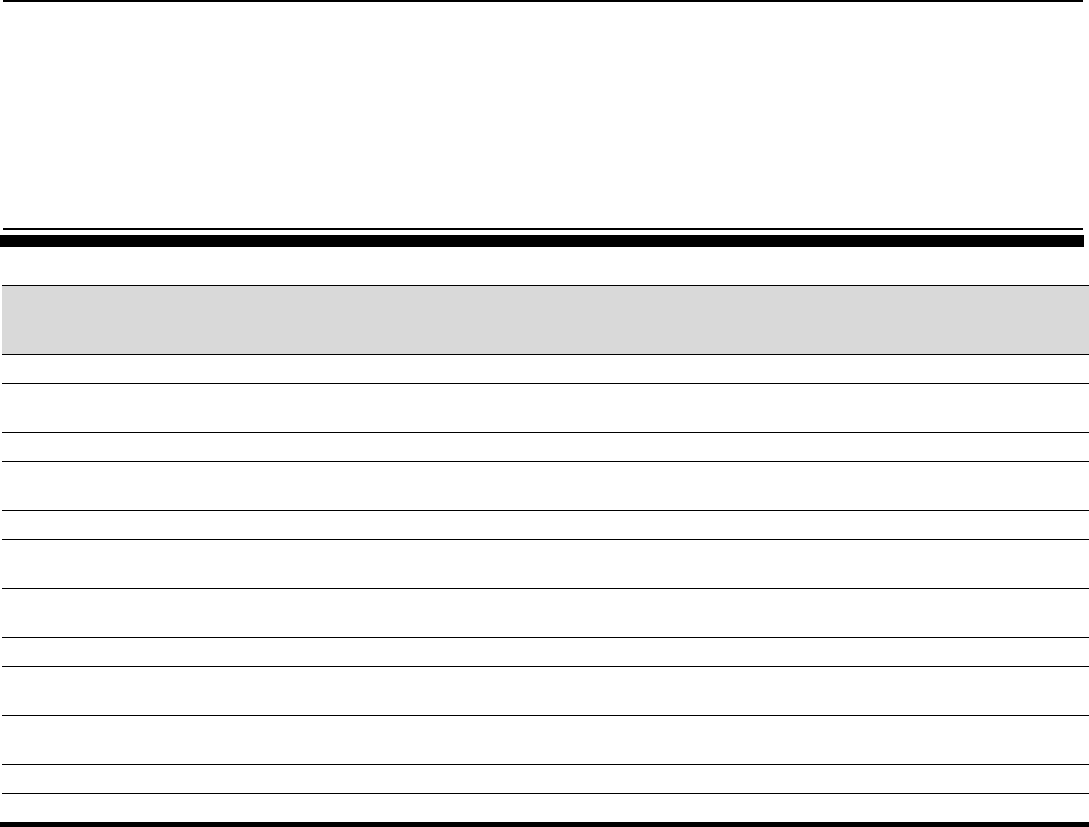
Appendix II: Analysis of Agencies’ Cloud
Service SLAs against Key Practices
Page 27 GAO-16-325 Cloud Computing
Table 3: Analysis of DHS’s Cloud Service SLAs against Key Practices
DHS Cloud Services
Business Intelligence
as a Service E-mail as a Service
Infrastructure
as a Service
Web Content
Management
as a Service
Key practice
M
P
NM
M
P
NM
M
P
NM
M
P
NM
Stakeholder roles and
responsibilities
X X
X X
Terms and dates
X
X
X
X
Measurable
performance objectives
X X
X X
Access to agency data
X
X
X
X
Service management
requirements
X X
X X
Disaster recovery
planning
X X
X X
Exception criteria
X
X
X
X
Security performance
requirements
X X
X X
Notification of security
breach
X X
X X
Consequences
X
X
X
X
Total
10
10
7
2
1
10
Source: GAO analysis of DHS data. I GAO-16-325
Infrastructure as a Service partially incorporated two key practices. For
the practice on how and when the agency was to have access to its data
and networks, it specified how and when the agency was to have access
to its data and networks, but did not provide how data and networks was
to be transitioned back to the agency in case of an exit. For the other
practice on service management requirements, it described how the cloud
service is to monitor performance, but did not specify how and when the
agency was to confirm audits of the service provider’s performance.
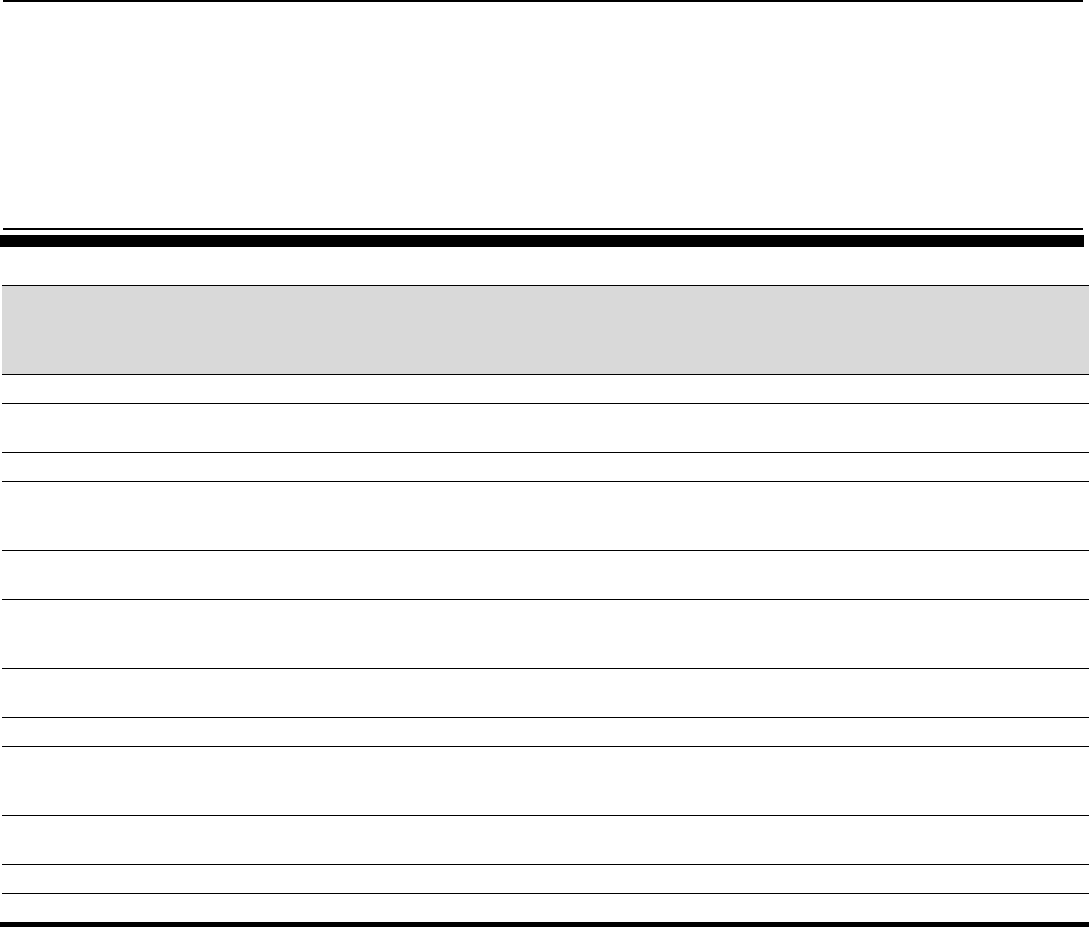
Appendix II: Analysis of Agencies’ Cloud
Service SLAs against Key Practices
Page 28 GAO-16-325 Cloud Computing
Table 4: Analysis of HHS’s Cloud Service SLAs against Key Practices
HHS Cloud Service Remedy Force
Medidata Rave
National Institute of
Bio-Medical Imaging
and Bio-Engineering
Public Website
National Institute
on Drug Abuse
Pubic Website
Grant Solutions
Key practice
M
P
NM
M
P
NM
M
P
NM
M
P
NM
M
P
NM
Stakeholder roles
and responsibilities
X X X
X X
Terms and dates
X
X
X
X
X
Measurable
performance
objectives
X X X
X X
Access to agency
data
X X X
X X
Service
management
requirements
X X X
X X
Disaster recovery
planning
X X X
X X
Exception criteria
X
X
X
X
X
Security
performance
requirements
X X X
X X
Notification of
security breach
X X X
X X
Consequences
X
X
X
X
X
Total
8
1
1
8
2
9
1
8
2
6
1
3
Source: GAO analysis of HHS data. I GAO-16-325
With regard to those services that partially met key practices,
• National Institute of Health’s Remedy Force partially addressed one
key practice on defining measurable performance objectives. It
included various performance objectives, such as levels of service
and availability of the cloud service, capacity and capability, and
measures for response time, but it did not include which party was to
be responsible for measuring performance.
• The National Institute of Health’s Medidata Rave partially incorporated
two key practices. It defined measurable performance objectives,
specifically it specified levels of service, capacity and capability of the
service, and response time, but did not specify the period of time that
it was to be measured. For the other practice on specifying a range of

Appendix II: Analysis of Agencies’ Cloud
Service SLAs against Key Practices
Page 29 GAO-16-325 Cloud Computing
enforceable consequences, it specified remedies, but did not identify
any penalties related to non-compliance with performance measures.
• The National Institute on Drug Abuse Public Website partially
addressed two key practices. For the practice on specifying how and
when the agency is to have access to its data and networks, it
specified how and when the agency was to have access to its data
and networks, but did not identify how data and networks were to be
managed throughout duration of the SLA. For the other practice on
specifying a range of enforceable consequences, it included a number
of remedies, but did not specify a range of enforceable penalties.
• HHS’s Grant Solutions partially incorporated one key practice on
specifying service management requirements. It provided for when
and how the agency was to confirm cloud provider performance, but
did not specify how the cloud service provider was to monitor
performance and report results.

Appendix II: Analysis of Agencies’ Cloud
Service SLAs against Key Practices
Page 30 GAO-16-325 Cloud Computing
Table 5: Analysis of Treasury’s Cloud Service SLAs against Key Practices
Treasury
Cloud Services
Enterprise Asset
Management
System
Franchise Financial
and Administrative
Services
IRS Portal
Environment
Manufacturing
Support Suite
Treasury Web
Solutions
Key Practices
M
P
NM
M
P
NM
M
P
NM
M
P
NM
M
P
NM
Stakeholder roles
and responsibilities
X X
X
X X
Terms and dates
X
X
X
X
X
Measurable
performance
objectives
X X
X
X X
Access to agency
data
X X
X
X X
Service
management
requirements
X X
X
X X
Disaster recovery
planning
X X
X
X X
Exception criteria
X
X
X
X
X
Security
performance
requirements
X X
X
X X
Notification of
security breach
X X
X
X X
Consequences
X
X
X
X
X
Total
10
10
9
1
10
8
2
Source: GAO analysis of Treasury data. I GAO-16-325
With regard to those services that partially met key practices,
• Treasury’s Internal Revenue Service’s Portal Environment partially
included one key practice on specifying how and when the agency
was to have access to its data and networks. It specified how and
when the agency was to have access to its data and networks, but it
did not provide on how data and networks were to be transitioned
back to the agency in case of an exit.
• The Treasury’s Web Solutions partially addressed two key practices.
For the practice on specifying how and when the agency was to have
access to its data and networks, it specified how and when the
agency was to have access to its data and networks, but it did not
provide how data and networks would be transitioned back to the
agency in case of an exit. For the other practice on specifying a range

Appendix II: Analysis of Agencies’ Cloud
Service SLAs against Key Practices
Page 31 GAO-16-325 Cloud Computing
of enforceable consequences, it did not provide detailed information
on a range of enforceable penalties and remedies for non-compliance
with SLA performance measures.
Table 6: Analysis of VA’s Cloud Service SLAs against Key Practices
VA Cloud Services
Customer Relationship
Management
eKidney
Terremark
Key Practices
M
P
NM
M
P
NM
M
P
NM
Stakeholder roles and
responsibilities
X
X X
Terms and dates
X
X
X
Measurable performance
objectives
X
X X
Access to agency data
X
X
X
Service management
requirements
X
X X
Disaster recovery planning
X
X
X
Exception criteria
X
X
X
Security performance
requirements
X
X X
Notification of security breach
X
X
X
Consequences
X
X
X
Total
10
10
9
1
Source: GAO analysis of VA data. I GAO-16-325
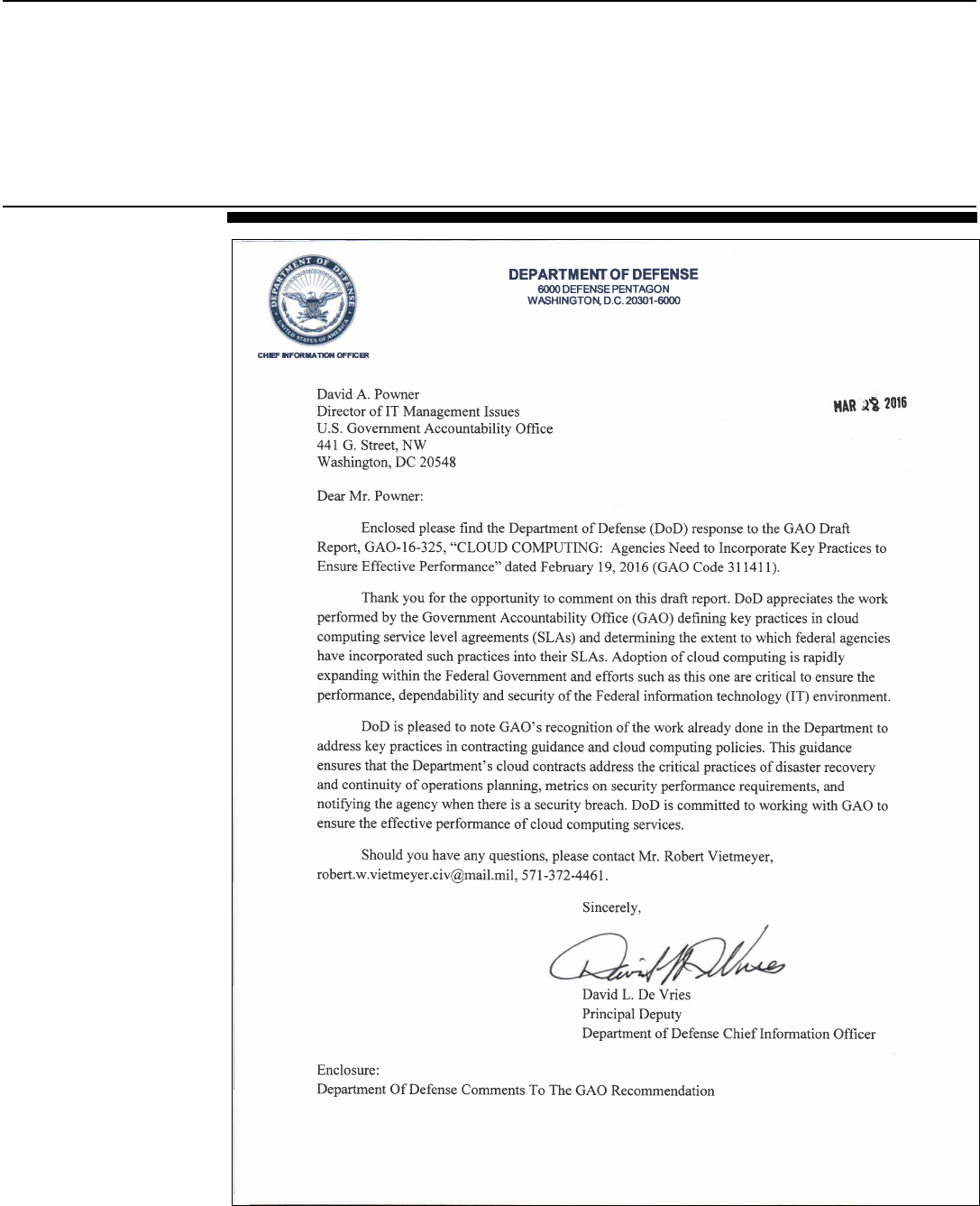
Appendix III: Comments from the Department
of Defense
Page 32 GAO-16-325 Cloud Computing
Appendix III: Comments from the
Department of Defense
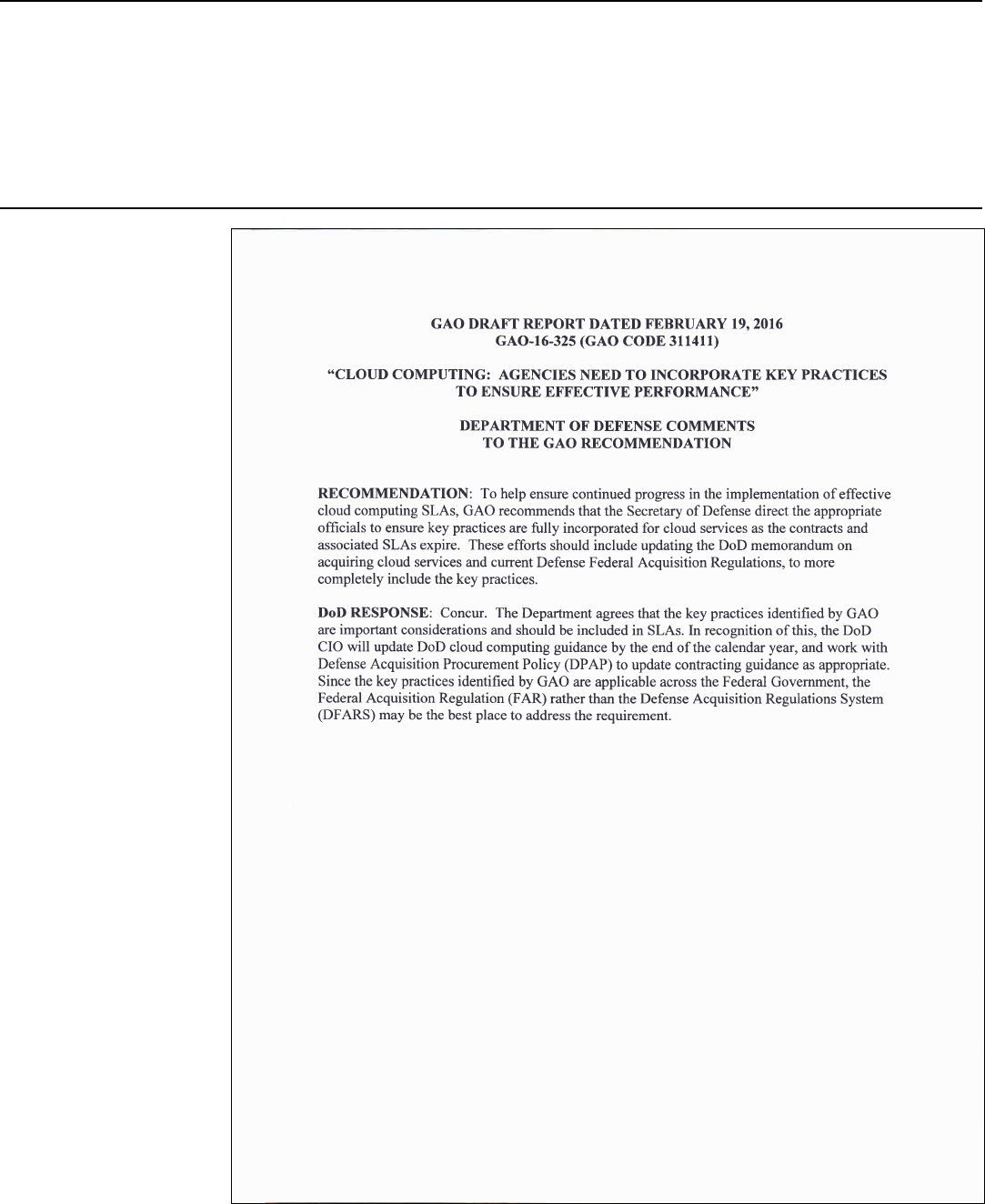
Appendix III: Comments from the Department
of Defense
Page 33 GAO-16-325 Cloud Computing
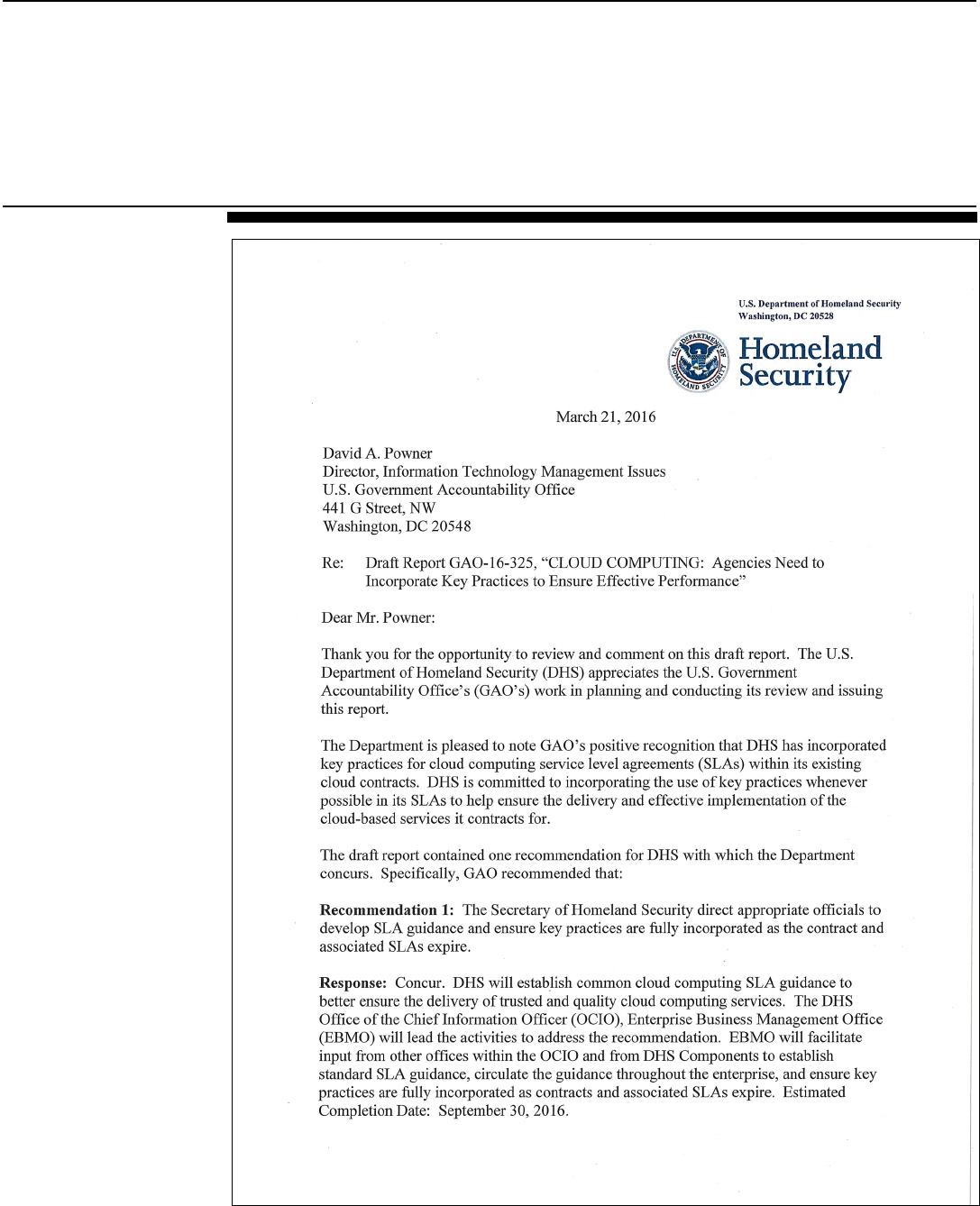
Appendix IV: Comments from the Department
of Homeland Security
Page 34 GAO-16-325 Cloud Computing
Appendix IV: Comments from the
Department of Homeland Security
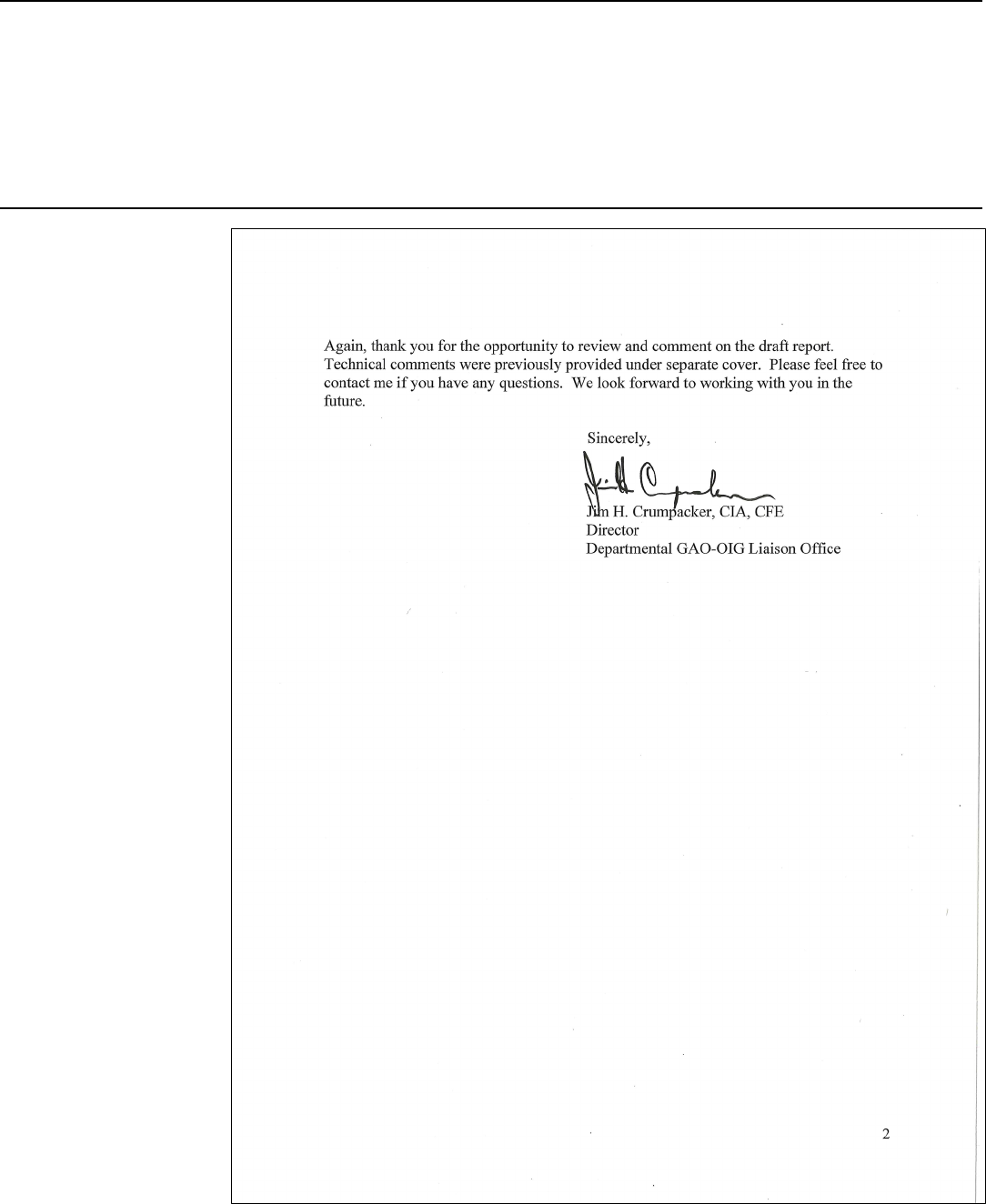
Appendix IV: Comments from the Department
of Homeland Security
Page 35 GAO-16-325 Cloud Computing
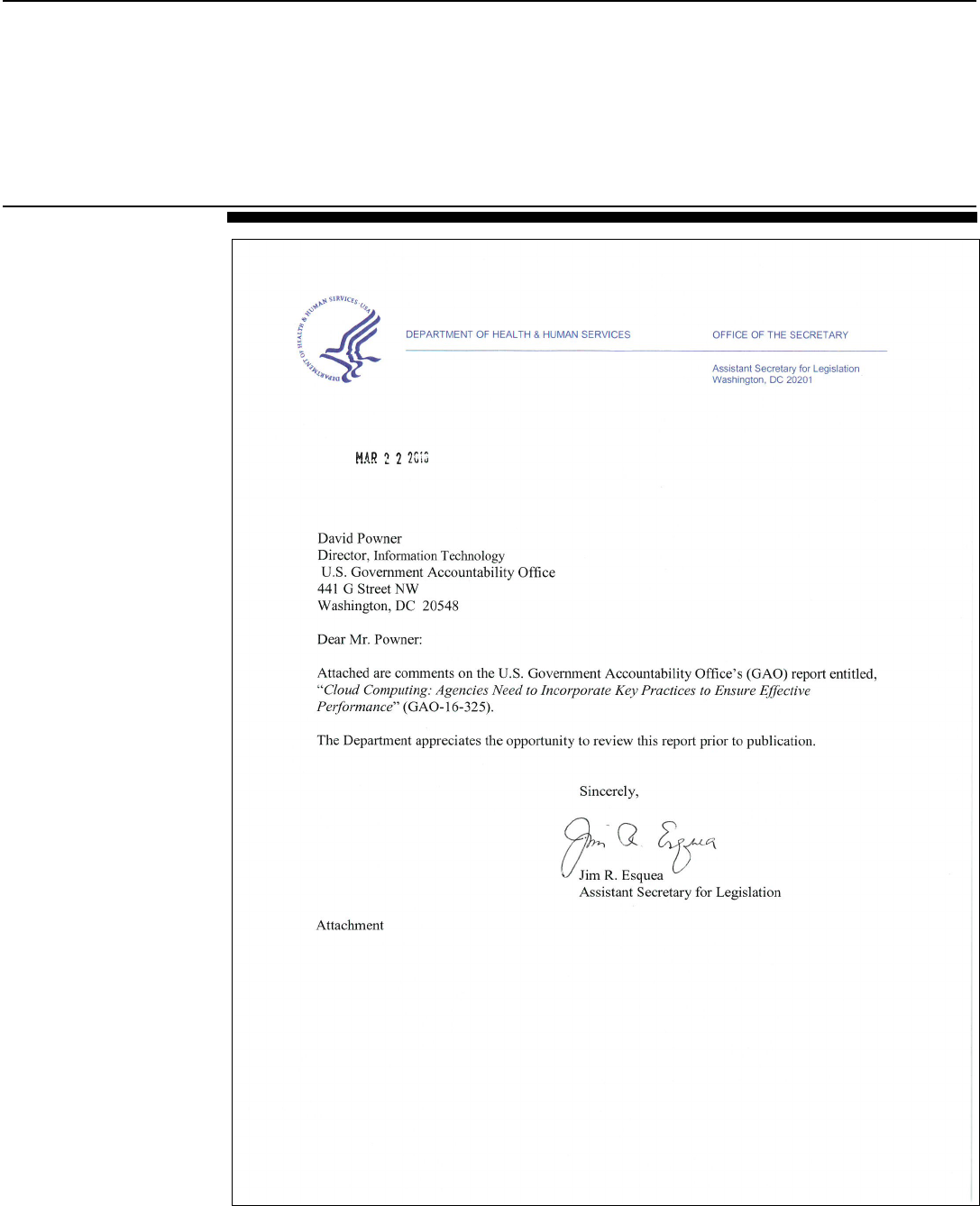
Appendix V: Comments from the Department of Health &
Human Services
Page 36 GAO-16-325 Cloud Computing
Appendix V: Comments from the Department
of Health & Human Services
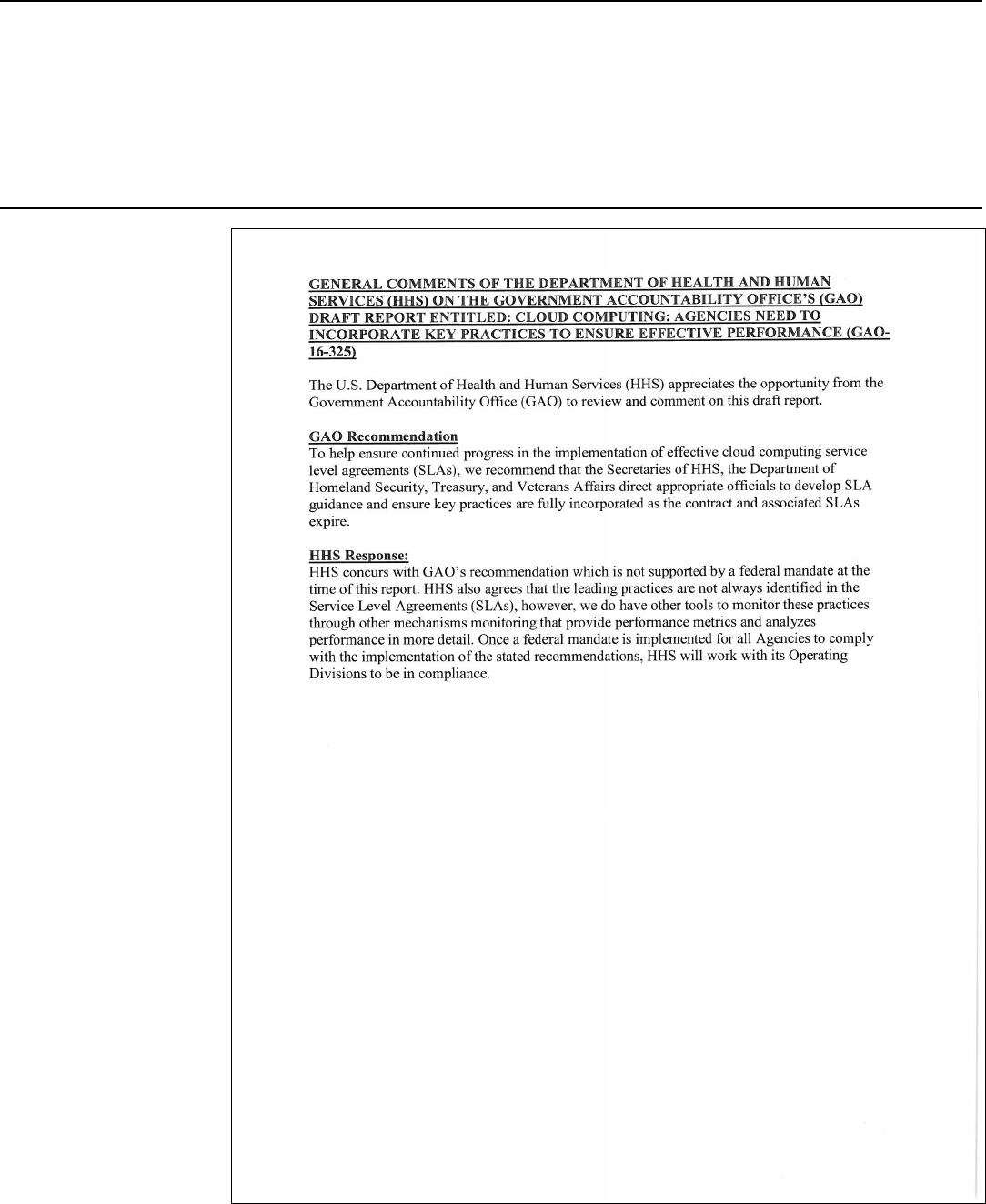
Appendix V: Comments from the Department of Health &
Human Services
Page 37 GAO-16-325 Cloud Computing
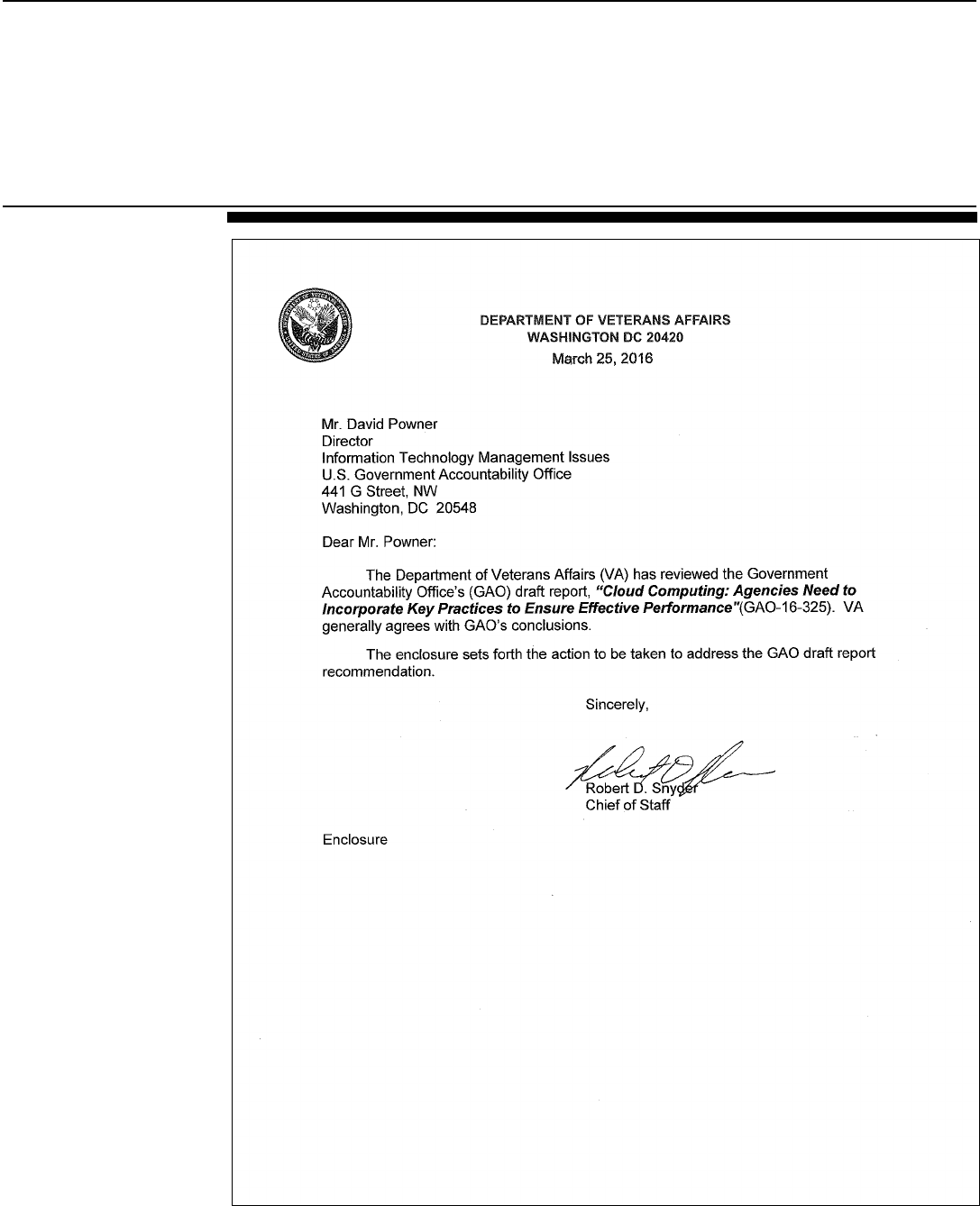
Appendix VI: Comments from the Department
of Veterans Affairs
Page 38 GAO-16-325 Cloud Computing
Appendix VI: Comments from the
Department of Veterans Affairs
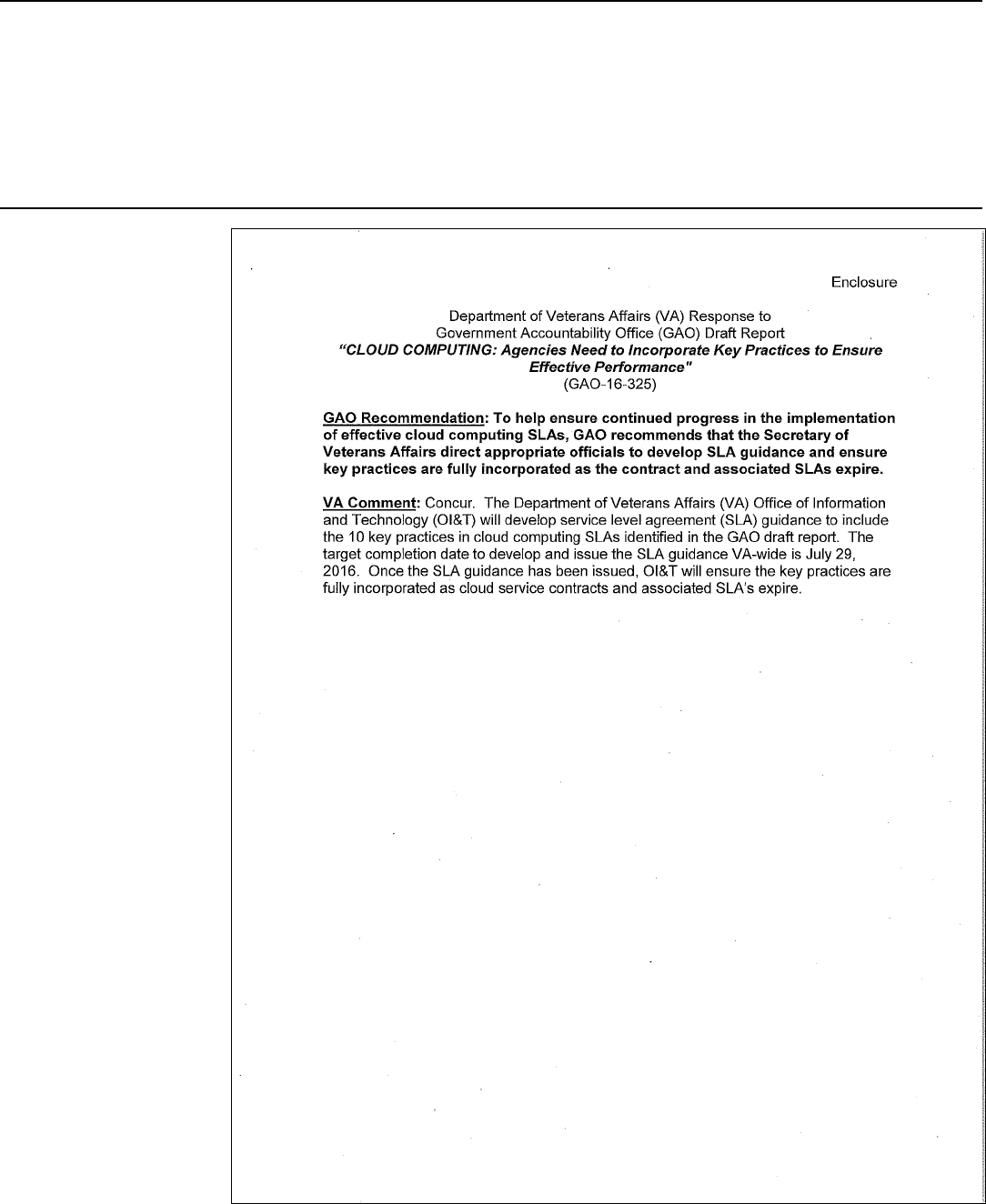
Appendix VI: Comments from the Department
of Veterans Affairs
Page 39 GAO-16-325 Cloud Computing

Appendix VII: GAO Contact and Staff
Acknowledgments
Page 40 GAO-16-325 Cloud Computing
In addition to the contact name above, individuals making contributions to
this report included Gary Mountjoy (assistant director), Gerard Aflague,
Scott Borre, Nancy Glover, Lori Martinez, Tarunkant Mithani, Karl Seifert,
and Andrew Stavisky.
Appendix VII: GAO Contact and Staff
Acknowledgments
GAO Contact
Staff
Acknowledgments
(311411)

The Government Accountability Office, the audit, evaluation, and
investigative arm of Congress, exists to support Congress in meeting its
constitutional responsibilities and to help improve the performance and
accountability of the federal government for the American people. GAO
examines the use of public funds; evaluates federal programs and
policies; and provides analyses, recommendations, and other assistance
to help Congress make informed oversight, policy, and funding decisions.
GAO’s commitment to good government is reflected in its core values of
accountability, integrity, and reliability.
The fastest and easiest way to obtain copies of GAO documents at no
cost is through GAO’s website (http://www.gao.gov). Each weekday
afternoon, GAO posts on its website newly released reports, testimony,
and correspondence. To have GAO e-mail you a list of newly posted
products, go to http://www.gao.gov and select “E-mail Updates.”
The price of each GAO publication reflects GAO’s actual cost of
production and distribution and depends on the number of pages in the
publication and whether the publication is printed in color or black and
white. Pricing and ordering information is posted on GAO’s website,
http://www.gao.gov/ordering.htm.
Place orders by calling (202) 512-6000, toll free (866) 801-7077, or
TDD (202) 512-2537.
Orders may be paid for using American Express, Discover Card,
MasterCard, Visa, check, or money order. Call for additional information.
Connect with GAO on Facebook, Flickr, Twitter, and YouTube.
Subscribe to our RSS Feeds or E-mail Updates.
Listen to our Podcasts and read The Watchblog.
Visit GAO on the web at www.gao.gov.
Contact:
Website: http://www.gao.gov/fraudnet/fraudnet.htm
E-mail: fraudnet@gao.gov
Automated answering system: (800) 424-5454 or (202) 512-7470
4400, U.S. Government Accountability Office, 441 G Street NW, Room
7125, Washington, DC 20548
Chuck Young, Managing Director, youngc1@gao.gov, (202) 512-4800
U.S. Government Accountability Office, 441 G Street NW, Room 7149
Washington, DC 20548
GAO’s Mission
Obtaining Copies of
GAO Reports and
Testimony
Order by Phone
Connect with GAO
To Report Fraud,
Waste, and Abuse in
Federal Programs
Congressional
Relations
Public Affairs
Please Print on Recycled Paper.
